If there is an ethnic group that stands out in the north of Benin and Togo this way, it is, without a doubt, the people known as the Batammariba, the Tammari or the Otomari, a village of farmers who have maintained until today, many of their traditions and customs such as the architecture of their houses that look like miniature castles.
In fact, these people took refuge in the mountainous region of Atakora migrating from the north, from Burkina Faso, and defending themselves from clashes with other tribal groups such as the Bariba. This mountainous area of difficult access was an ideal place to protect oneself from his enemies and also from the slaveholders of the Kingdom of Dahomey. In addition, they built small clay castles, which are typical constructions of this town and for which they are currently known. It is a group that did not have much external influence and has been able to preserve its traditions to this day.
With the arrival of the European colonizers in Africa and the division of countries during the Berlin conference, the region where this ethnic group lived was separated into two countries: on the one hand, the part that corresponded to the Boukoumbé valley became Benin and there we find the group known as Pays Betammaribè; and, on the other hand, the region of Koutammakou became Togo and there we find the same group but which receives a different name: the Pays Tamberma.
Today, many people call this group Pays Somba, but the name “somba” was used pejoratively by European colonizers and bariba when they met them. Therefore, today the correct name to call the Batammariba people is Pays Betammaribè for those living in Benin and Pays Tamberma for those living in Togo.
Etymologically, the concept of batammariba means “those who know how to build” since this farming village has always been considered a building people of their own traditional homes and that they are an emblem for their culture. The houses of the otomari people are true cathedrals. These homes are called tata or tata somba in the Benin area, while in the Togo area they are called tekyete.
Despite being from the same ethnic group and maintaining the same traditions, we do find some small differences between the groups that are in Benin and those that are in Togo. For example, the tatas of the Pays Betammaribè (also known as tata somba) have a decoration of engravings with small geometric motifs that they draw on the exterior mud walls of the house and that are the same drawings that have their population scarified on their face; while in Togo, the houses of this group do not have these engravings and their population does not have the scarifications either.
For this people, livestock is a fundamental element. Like some African societies such as the Maasai of Kenya, family wealth is measured by the number of cattle you have. Livestock are not only important for the economic point of view, but also to participate in funerals and sacrifices. Apart from livestock, this town also stands out for its agriculture, with cereal crops such as millet or corn that they grow next to their houses.
This village is an ethnic group that tries to stay true to its traditions, keeping its well-known buildings alive, as well as performing different rituals such as the ceremony of the passage to adult life that we could see in a small village in the Koutammakou region of Togo; where the teenagers spend a few days in the forest with some priests and then fight each other with whips in front of the whole village to prove that they are already all men. It’s a pretty striking scene that, nowadays, they do with protections like helmets over their heads but that, equally, is very shocking to watch.
Apart from getting to know and discovering this ethnic group, in the Atakora area you can also do other activities such as visiting the Kota Falls, located south of Natitingou; discover different local markets or visit the Pendjari National Park, located in Tanguieta, 50 kilometers north of Natitingou, and which is one of the largest national parks in West Africa where you can find a lot of wildlife. Unfortunately, much of the park is in conflict due to the presence of jihadist groups and for this reason, when we went to this area, it was closed to the public.
The village Otamari is a village located in a very rural atmosphere that stands out for its miniature medieval castles, with thick earthen walls and cylindrical turrets with thatched roofs. The Koutammakou region of Togo is a UNESCO World Heritage Site due to its uniqueness. In contrast, the Boukoumbé Valley in Benin does not yet have this seal despite being part of the same ethnic group. For this reason, many tourists go to visit this group exclusively in Togo, although for us the best way to do it is to know the two regions of both countries because their landscape and their environment are really spectacular.
How to get there?
If you want to know the reality of the Otamari people living in Benin and Togo, you will have to travel to the north of these two countries. The main localities where we find this ethnic group are scattered between the border of Benin and Togo that goes from Natitingou (Benin) to Kandé (Togo).
To get to Natitingou, you will find different transport companies that make the journey from Cotonou, such as the ATT company that has one of its offices in the Plaza de l’Etoile Rouge in Cotonou. From Natitingou, with a Zem you can visit some of its tourist attractions such as the waterfalls of Kota or take a Zem to go to some of the nearby towns such as Tagaye to discover the first tata somba or a shared taxi (known as taxi brousse) to go to Kossoucoingou or Boukoumbé (we paid 1,000 CFA per person), the last Beninese town before crossing into Togo and which is full of traditional houses.
To get to Kande, you can take a bus that goes from Kara to the north for the main route N1, or also a van or shared taxi. We for this journey from Kandé to Kara paid 1,000 CFA per person. From Kandé, you will find different motorcycles that will take you to the towns that are in Koutammakou. We paid a price of 2,000 CFA per person for this journey. If you want, you can also take a private taxi from Kara to the Pays Tamberma region, which is located about an hour and a half from the city.
In Benin, we find different towns such as Tagaye, located a few kilometers from Natitingou, where you can live a very enriching experience with Alphonse; or Kossoucoingou or Boukoumbé, closer to the official border between these two countries and where you can find different eco-responsible projects that will explain everything related to otomari culture.
In Togo, between the road to Nadoba and Kandé (a beautiful dirt road) you will find different small settlements of this ethnic group that is known, in Togo, as Pays Tamberma. A journey to a rural and very African environment!
How to get around Pays Betammaribè and Pays Tamberma?
The Otamari village is an agricultural village that has its fields next to the traditional houses of each family. For this reason, many of the houses are scattered in a fabulous rural setting.
If you want to move around the different places of Pays Betammaribè and Pays Tamberma, the best way is to take a motorcycle to pass between the different dirt roads and trails and observe the beauty of the architecture of its houses and the incredible panoramic view of its landscape.
We, for example, in the village of Boukoumbé (Benin) talked to a biker and negotiated a price to take us to visit different tatas and learn more about the Batammariba culture. We paid Bernard 5,000 CFA and he took us on his motorcycle for a morning so we could see his house and visit other Tata features of that area. If you want to contact him, you can write to him at +229 96 52 55 05.
In Togo, the Koutammakou region, a UNESCO World Heritage Site, is more influenced by tourism and, therefore, you will find it more difficult to move freely through its tekyete since access is more regulated with a supposed entry fee to tourists. Anyway, in Nadoba (the border town with Benin) or Kandé you will also find motorcycles (we paid 2,000 CFA per person for the Nadoba-Kande journey) that will take you to discover different villages of this beautiful region located between the mountains and that is an essential visit during your trip through Togo.
So, if you travel by public transport, the best way to move around this region is to ride motorcycles from local people who will take you on a tour to discover the otamari village. Also, you can visit this region with an organized trip (you can find more information in this article) that will take you to discover some of the peculiarities of the Pays Tamberma or Pays Betammaribè and thus you will not have to negotiate any type of transport (although this will be the most expensive option). If you go with your own vehicle, driving on these dirt roads that cross fields where these miniature castles are erected on both sides will surely be one of the experiences that you will remember most strongly from your trip through the African continent.
What to do in Pays Betammaribè and Pays Tamberma?
The different activities to do in order to get to know the Otamari people and also discover the north of Benin, the Boukoumbé Valley and the Koutammakou region of Togo are:
– Discover its traditional houses in the form of fortifications
The Batammariba people stand out for being great builders. Not only because its name says so, but also because of the example of its fortifications that are known in Benin as tata somba and in Togo as tekyete.
The tata or tekyete stand out for being fortifications made of clay built on two floors. They are homes that stand out for their resistance over the years. Only made with earthen materials such as mud, branches and straw, they also have a drainage system that facilitates the flow of water during the rainy season.
On the ground floor, we find a space to store livestock and also altars that they use as a space of protection and to chase away evil spirits. This floor stands out for having no windows. Therefore, it is a dark space that has a small staircase that gives rise to a living room that is used as a kitchen and that connects the ground floor with the upper floor.
The upper floor of these fortifications is formed by a terrace with different rooms in the form of a cylindrical tower and covered with thatched roofs. In these rooms, we find the different rooms of the families, which stand out for having a very small entrance; as well as the barn, which is located in another cylindrical tower and where we find a small staircase made in a trunk to go up to the thatched roof, which opens and thus can store all the cereal and all food products. All these cylindrical towers that are part of these rooms and that are located on the terrace form a beautiful silhouette of what these fortifications are.
The gates of the tata or tékyété are always oriented towards the west in order to protect themselves from evil spirits. Consider that this ethnic group is also animistic and in their homes we find a lot of symbolism. It is very common to find at the entrances some element that protects the family from evil spirits such as an animal skull, and some altars with some fetish object in order to obtain protection.
These houses were usually built around baobabs or giant trees and were surrounded by fields and orchards cultivated for the same family that lived in the house. For this reason, nowadays when we visit this region we can see that each house is quite separated from that of its neighbor and we can see a village with very scattered houses located in a very rural extensive territory.
The houses of this ethnic group were studied and built to also fulfill a defensive function: to defend themselves from attacks by enemy tribal groups such as the Bariba, but also from the Kingdom of Dahomey that made raids through this region in order to capture slaves and then sell them to European traders, who sent them to the New World from different African villages such as Ouidah (Benin) or Agbodrafo (Togo). For this reason, we did not find many windows and often the door is narrow and low so that only one person could pass or to cut off the head if the enemy entered.
If you want to enter some of the houses, think that you will have to pay as an entrance fee to the family. We, for example, sometimes pay 1,000 CFAs per person, a price that you will have to negotiate with each family to let you into their homes and contemplate the peculiarity and interest of these traditional constructions.
Discovering and entering some of the traditional houses of this ethnic group is one of the activities that you cannot miss during your tour of Benin and Togo, as they are a sublime example of African architecture emerged in a very rural environment, and that will surely be part of the photo album of your trip through Benin and Togo!
– Discover the scarifications of the Otamari population of Benin and compare them with the exterior engravings of their tatas
Scarifications are scars, shallow incisions that are usually made with artistic pretensions on people’s skin. The Pays Betammaribè are one of the ethnic groups where you can still find a lot of population with scarifications as a symbol of identity and belonging to this special group in the north of the country. However, we only find them in the town belonging to the Boukoumbé valley, in the Benin area. In Togo, the Otamari population does not carry scarifications.
We were told that scarifications in this ethnic group are usually carried out from the age of 2 and that each sign symbolizes a life stage of that person. For example, many women perform scarification when they start puberty to know that they are ready for marriage and to have children; And many people also carry a scarification that corresponds to the same shape they have drawn outside their houses, known as Tata Somba.
These geometric motifs are usually vertical and horizontal lines symbolically reminiscent of the agricultural lines that are made on the ground to harvest and that symbolize growth and life. Some even believe that these lines represent the scales of the crocodile, a symbol that is related to home protection. Scarifications are made with a special small metal knife. In fact, the blacksmiths who make these knives are considered very important people within the Otamari people of Benin because they are associated with the solar deity Kuiye, who is the first to bring fire to earth.
As it also happened with other groups in the country, such as the Holi (if you want to know more you can click here) or the Taneka (to know more, click here); today the Pays Betammaribè in Benin maintains one of the most unique essences of African ethnic groups: scarifications.
– Sleeping in a tata in the Pays Betammaribè or tekyete of the Pays Tamberma
One of the most unique experiences you can do in this area of Togo and Benin is sleeping in one of its traditional houses. As we have mentioned, the rooms are located on the second floor, in small cylindrical towers that protrude from the floor of the fortification and covered with a thatched roof. They have a very low front door, so you will have to bend down to enter the room. Do not expect much luxury or comfort, as the space is small; But it is an experience that you cannot miss if you want to live for a night sleeping in one of the traditional houses of one of the most special tribal groups of these two countries.
We slept at Alphonse’s house in the village of Tagaye. This village is located a few kilometers from Natitingou, next to the road to Boukoumbé; and can be reached with a Zem from the city of Nati itself (we paid 750 CFA per person).
Alphonse’s house is a traditional family tata that has opened for tourists and is surrounded by other tatas from the families that live in the village. We paid 3,000 CFA per person and with Alphonse we had an incredible experience, as he accompanied us to visit some houses in the village and we were able to learn more about the culture of the Batammariba people. If you want to contact him, you can call him (he does not have WhatsApp) at +229 66 95 11 66, or go directly to the town of Tagaye, and right next to the school ask Alphonse about his house and he will surely accompany you.
– Walk the paths of the different villages of this group that is located in Togo and Benin
The tata or tekyete are buildings of incredible beauty. One of the characteristics of these spaces is the fact that around the construction there are usually orchards or cereals, which is the main source of wealth of the family that lives in that tata. For this reason, the Otamarian villages stand out for being of long extensions and with houses scattered throughout the different rural lands of the northern area of Benin and Togo.
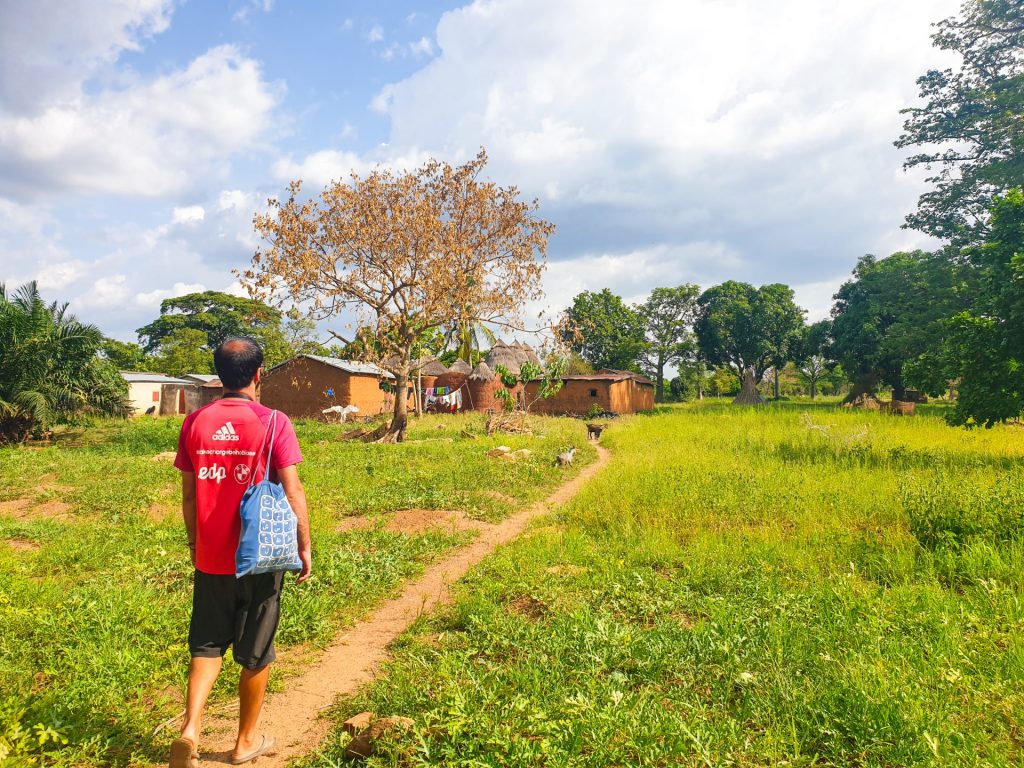
For this reason, one of the most beautiful experiences you can do is ride a motorcycle and travel along the dirt roads of these villages and be amazed by the large number of traditional houses and the beauty of their surroundings.
We, for example, in the Koutammakou region of Togo were able to take a Zem that took us from Nadoba to Kandé (for a price of 2,000 CFA per person) passing through an incredible dirt road, with traditional houses on both sides, plantations, small rural villages, mountains in the background and exceptional scenery. A very authentic Africa that traveling through it on a motorcycle and without a helmet made it even more exceptional.
In Benin, in the Boukoumbé Valley, we spoke to a motorcyclist with whom we negotiated a price and he showed us his house, which was a traditional tata. Then, with his motorcycle we went to travel different paths in the environment and visiting other houses in an incredible bucolic environment. For this morning tour, approximately, we paid 5,000 CFA for both. We went with Bernard, so if you want to contact him you can write him directly to +229 96 52 55 05.
This region of Togo and Benin is very different from what we had been seeing of these two French-speaking countries. For this reason, we recommend that you take a vehicle and walk along the paths of the Pays Tamberma and the Pays Betammaribè to capture a very authentic and rural Africa. An Africa that will surely not leave you indifferent.
– Attend some of the traditional rituals of this ethnic group such as the dance des fouets
The Pays Betammaribè in Benin and the Pays Tamberma in Togo are ethnic groups that still maintain many traditions practiced by their ancestors. As we have mentioned, the fact that they are located between mountains has meant that they have received very few influences from the outside and that, to this day, they still carry out different rituals and traditions. For this reason, if you are lucky, attending some of these festivities will surely be one of the most special memories you will take away from your trip.
We had the opportunity to go to see a ceremony where some young people took the step towards adult life. This ritual we saw in Quaterma, a small village in the Koutammakou region of Togo. It was a totally authentic experience where we saw the arrival of some teenagers who had spent a few days in the forest with some priests and, just afterwards, fought among themselves with whips to prove to all the people that they are already men.
This ritual, which is also known as the dance des fouets, is a way of showing society that those adolescents are already prepared for adult life. Today, many of them are protected with motorcycle helmets and shields that are prepared in order to avoid the lashes of their companions. It was utterly shocking to hear the noise of the wind when they pulled hard at those whips, and to see the wounds on the back of those who were not fortunate enough to avoid being beaten by their colleagues…
Despite the scenes of struggle, there was an atmosphere of joy and celebration in the town. In different circles, everyone commented on the move, suffered when someone received a blow, laughed at a fall and screamed when someone got too close with the whip up to where they were. All the neighbors and also the people around were there observing one of the most important rituals for the otamari people, such as the moment when a person becomes an adult.
If you want to have the opportunity to see a ritual, we advise you to ask local people if there are any scheduled during the time you are going to visit this region. Many times, if there are tourists, they themselves prepare one in exchange for an amount of money. Some say it is an act only for tourists, but they also see it as a way to earn a living. We could discuss this topic for a long time… We were lucky enough to see a totally authentic one. This, of course, took us a few days longer than expected waiting in Kara while we confirmed knowing the exact day that this local ritual was celebrated in the Pays Tamberma. Still, it was a very interesting experience!
– See the process of making shea butter
Shea butter is an ingredient that is present in many cosmetic products that we can buy in our pharmacies and that stands out for its extraordinary protective properties of the skin. Most of this ingredient is produced in Africa, and both in the Pays Tamberma and the Pays Betammaribè you can find different places where they make shea butter in an artisanal way.
Shea butter is a substance extracted from the fruit of a tree known as shea. This tree grows in different regions of Africa, in an imaginary belt that goes from Senegal to Uganda. For this reason, both in the north of Benin and in Togo we find many examples of shea butter makers. If you visit the otamari village, you will surely be able to know first-hand how they make this cosmetic product so valuable for our skin.
Tradition says that women are the only ones in charge of making shea butter. The production process begins with the collection of the fruit from the tree, which falls to the ground when it is ripe and is subsequently left to dry in the sun. For this reason, right on the shoulder of the main roads that you will find crossing Benin and Togo, you will often find sheets full of shea that are drying out taking advantage of the heat of the sun and the asphalt. Once the fruits are dry, the shell is removed and the fruit inside is chopped.
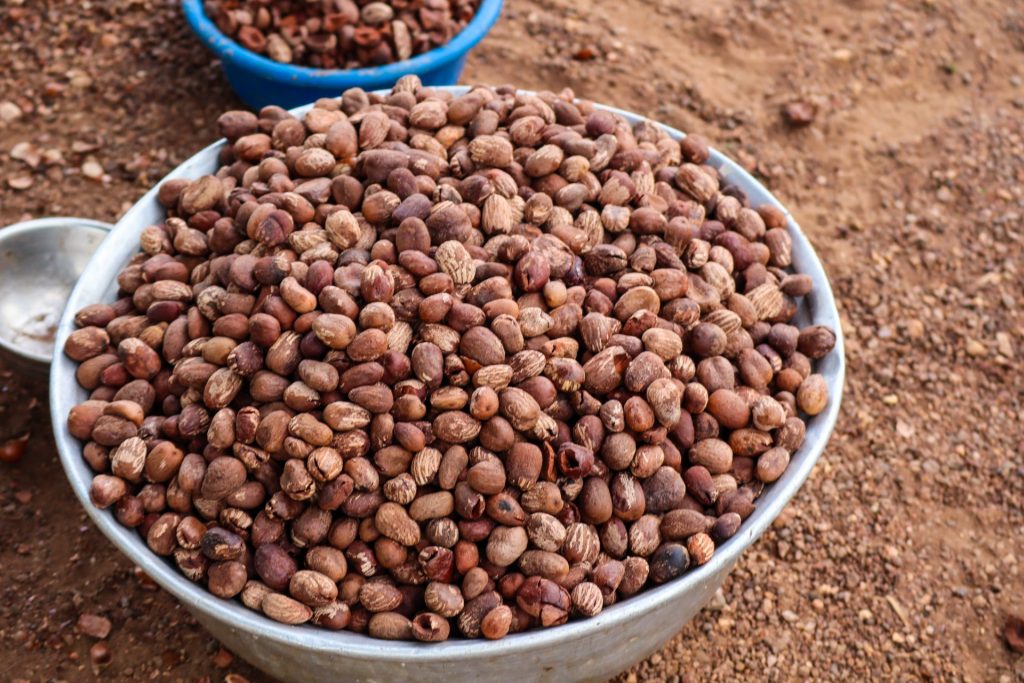
This is where the true production of butter begins. The seeds are dried again and roasted on fire, a process that determines the final color of the product: we can find a whole spectrum, from white, yellow and even black. The fruits are chopped again and mixed with water. The resulting mass is kneaded and pressed by hand, baked and finally filtered with a cotton filter. When it finally cools, shea butter is ready to use. In Africa, the shea tree is very present in many rural villages either to market it, to use its resin as natural glue, to feed or to use it in traditional medicine.
– Visit Kota Falls (Benin)
Kota Falls, located 20 kilometers south of Natitingou, is a waterfall that emerges from the Sota River, within the region also known as Kota. This natural place stands out for having different paths where you can enjoy the nature of this eastern slope of the Atakora mountains.
You can see the waterfalls from the top of the waterfall, or also reach their feet and, if you want, bathe in its waters. Despite not having the height of Wli Falls, located in Ghana and which are the highest in West Africa (if you want to know more, click here); your visit is a good activity to do if you have time for a morning or afternoon and find yourself in the city of Natitingou.
The cost of admission in May 2022 was 1,000 CFA per person. And the round trip by motorcycle from Natitingou cost us 1,500 CFA per person. It will take you about 30 minutes from Nati to get there.
– Visit Pendjari National Park, although it is now closed for safety (Benin)
Pendjari National Park is one of the few places in West Africa where wild animals can be seen. You can find lions, elephants, crocodiles, hippos, buffaloes, antelopes… that coexist in a very beautiful environment of rivers and mountains. Unfortunately, this park has been closed for quite some time for security reasons due to the conflict with different jihadist groups in northern Benin that have led to different deaths and abductions of tourists. In May 2022 the park was closed. If you want to go, you have to check how the situation is and if you can access it with the relevant security measures.
Where to sleep in Pays Betammarbiè and Pays Tamberma?
As we have mentioned, the Otamari people are divided into two countries in a mountainous region of large area. For this reason, we will highlight several accommodation issues for each city and region. We highlight:
– Ma Case Au Benin: This accommodation is located in the city of Natitingou. Gaetan, its owner, will assist you with open arms. It has different rooms and a patio where you can rest from the heat of this region of Benin. It also has a restaurant. One of the best places to be if you want to have a base camp in Natitingou, and rest at the same time from the noise of the city as it is about 5 minutes walk from the market and the main road. If you want to contact Gaetan, you can call him at +229 96 76 69 11; or visit their Facebook page here.
– Chez Alphonse: This tata is a really authentic place if you want to have an immersive experience at Pays Betammaribé. Of course, you will have to leave the luxuries at home because you will live just as the local people do. Located in Tagaye, between the cities of Natitingou and Boukoumbé, here you can see a tata somba in all its splendor and sleep in one of its rooftop rooms. Alphonse, its owner, is an old man who will take you for a walk around the town and explain the peculiarities of these constructions as well as the characteristics of his tribal group. It is a great experience because you are in a totally rural environment, away from the tourist circuits, and in a spectacular environment. If you want to find it, you will have to go down to the village of Tagaye and next to the school ask where Alphonse’s house is, and from there they will show you the way. One of the best experiences during our trip to Benin. If you want to contact Alphonse, you can call him (he does not have WhatsApp) at +229 66 95 11 66.
– Tata Victor Koubetti: This accommodation is located in the center of Boukoumbé, the last town in Benin before crossing into Togo. It is a large hotel where you can find different rooms that have a fan to air you during hot days. Nearby, you will find the headquarters of this association where you can enjoy meals in a spacious courtyard and organize from there different activities for the Pays Betammaribè. The double room in the hotel cost us 7,500 CFA. For more information, you can click here. We decided to take a tour of Boukoumbé with Bernard, a local inhabitant who had a motorcycle and write to +229 96 52 55 05.
– Appartament Marie Antoinette: This accommodation located in the city of Kara, in Togo, is one of the best places to do base camp and visit the Koutammakou region, which is about 75 minutes to the north, as well as the surroundings of Kara, a large city where you will find all kinds of services. Here, you can find apartments with kitchen, wifi, refrigerator, air conditioning and also sheltered parking. We stayed there for 6 days while we waited for confirmation where the ritual of initiation into adult life would be held in a small village in the Pays Tamberma. A good option if you are north of Togo. For more information, you can click here.
Our route
DAY 1: After some amazing and magnificent days in the Pays Taneka (if you want to read our experience, click here) where we could attend the farewell party of a king and share afternoons in traditional villages, we took a motorcycle to Copargo and from there a shared taxi that after an hour took us to Natitingou, one of the most important cities in northern Benin.
We had been lucky with the transport because by 10am we were already in Nati, so our first mission was to find accommodation in this city that is the gateway to the Pays Betammaribè. We went to Ma Case Au Benin where we were able to talk to Gaetan, its owner, who told us that there was no one in the accommodation and that, therefore, we could spend the night there.
After leaving our luggage, we walked to the market which was about 10 minutes from our accommodation. The market was located right next to the main road and stood out for numerous outdoor stalls where we sold mostly food, but where you could find spare parts for appliances, clothes and many other things. The African markets are spectacular and it is one of the things we like to discover the most, and this was no exception.
Women in colorful suits located behind counters cooking and preparing food, carts up and down crowded with objects, motorcycles loaded with ropes carrying the latest purchases made at the market, stalls with kitchen utensils and a soundtrack of horns, voices, colors and heat that turned that environment into a commercial capital.
In fact, we bought some mangoes. Mangoes in Africa are delicious… Not only because of their sweetness, but because they are really local! There, it will be very difficult for you to find pears, but instead tropical fruits such as mango, papaya or bananas you will have the ones you want!
After this visit to the market, we took some bikes and headed south of Natitingou, going back along the main road we had taken in the morning. Suddenly, the bike turned left and we began to enter some dirt roads with many potholes that left our ass very ramshackle… We were entering the Kota region and soon arrived at the entrance to Kota Falls.
There, we were surprised to meet Albert, a boy from Benin who spoke perfect Spanish. He was the person who sold the entrance tickets, and who told us that he had learned Spanish at school and, above all, through some series such as La Casa de Papel on Netflix. The globalization of telecommunications has reached all over the world and from many places in Africa we had been able to see how this series was one of the most popular Spanish-speaking among the African population.
We walked for about 10 minutes along a small path until we came to a fork. From there, we could already hear the noise of water. One of the paths descended steeply until it reached the height of the river Sota. We took this path and after passing through some stones and crossing the river that carried little water, we found ourselves facing these waterfalls from the Kota region.
Taking advantage of the fact that it was very hot and that we had the swimsuit in our backpack, we took the opportunity to take a bath. The water wasn’t too clear, but it was still very cool… And with that heat, that coldness was really to be appreciated. After relaxing in that pool of water that formed the waterfall, a local couple arrived and continued along the side of the water and climbed a path that meandered the waterfall and reached its summit.
We did the same route and reached the top of the waterfall, from where we could take some photos, and we returned along the path above until we reached where Albert was, who was very happy to have found us and to have been able to put his Spanish into practice. He asked us for our mobile so that he could communicate and continue speaking Spanish, under the watchful eye of the Zem driver who laughed seeing his friend speaking in a language totally unknown to him.
We returned to Nati under an increasingly dark sky. It threatened with a storm, but we still had time to go for a walk around the market. There, we were able to walk the different streets full of food stalls, carts up and down and hundreds of multipurpose objects exhibited. We took advantage of the fact that we were a little hungry to buy a mango and ate it by the roadside, sweaty, but happy to enjoy one more day of the African routine.
The last rays of sunshine were hiding behind the clouds, a brief indicator that a good downpour would soon fall. So we hurried and walked to the accommodation which was about 5 minutes from the market. When we arrived, the drops that presaged a good shower for the African began to fall: the name we called these intense downpours of short duration and that cool the atmosphere.
We took refuge in our room, and didn’t leave until dinnertime. Gaetan (and his wife) had prepared meat with chips for us (we had wanted them for days) and after enjoying a good time in the fresh air in the company of cats and mosquitoes, we went to bed to meet Alphonse in Tagaye the next day. We didn’t really know where we had to go, just that we stopped at the school next to the road and asked about Alphonse there, but surely a very special day awaited us in this region of the Pays Betammaribè.
DAY 2: The day started very sunny with a very serene sky. We said goodbye to Gaetan and walked to the main road where we found a motorcycle that left us to Tagaye. It was difficult for us to make ourselves understood because everyone thought we wanted to go to Kossoucoingou or Boukoumbé, but we only went a few kilometers from where the route that went from Nati to the border with Togo began, to a small village called Tagaye.
A motorcycle took us to Tagaye, a village of only four roadside houses, a bar and a small school. He left us right there, and we decided to go to school to ask where Alphonse’s house was. Surprisingly, we found many students in the playground playing who came immediately to see us… There, there was no adult to control them. After talking to them, we understood that today there was no school because teachers were taking exams in the capital of the region, but that they were still there playing in the playground. Today they had a party but they used the school space as a safe playground to play ball, run up and down and hang out…
When we asked where Alphonse lived, the older ones took us by the hand and accompanied us along a narrow path that advanced into the fields. The little ones followed us from a distance, with a shy smile and a laugh that they exaggerated when we turned around and looked at them… We passed by our first Tatas Somba, the traditional constructions of the otamari people, fascinated by the beauty of its architecture; but, with no time to stop because the children were guiding us to Alphonse’s house, we reached a house from which an old man named Alphonse emerged. He would be our host for that day for the Pays Betammaribè.
The children stood by the house looking at our backpacks, our features, touching our bracelets and waiting for what we would do in that small lost place north of Benin. Today, when there was no school, we were the attraction of that village and surely our presence was already known by all the neighbors of Tagaye. Alphonse told us that he had been waiting for us, but the fact that we did not have Whatsapp or balance to call made us show up there by surprise. Fortunately, there was no one else so we could sleep in his tata without any problems.
We entered through the small door and left our backpacks downstairs, next to goats and chickens that babbled through what was a kind of corral where the animals took refuge. We went back out and, now, we could see the beauty of the tata somba, the cathedrals of the Pays Betammaribè and which are a construction in the form of impressive miniature castles.
With mud walls, different cylindrical towers protruded upstairs. There, they had the barn and also what would be our room. Next door, a small land to cultivate. The walls of the house were decorated with different geometric shapes that corresponded to the scarifications worn by the local people of Tagaye. The environment where we were, the majesty of the tata, the good morning it was, Alphonse and all the time ahead of us predicted that today we would spend a full day.
With Alphonse we took a tour of his house. He showed us the outer walls, and then we walked into where our backpacks were. Downstairs, as in all tatas, we found a space to keep the animals and in a small hole, a small staircase led to a landing and from there, a log carved in the form of a staircase just took us upstairs: the terrace of the tata.
From above, we had a space that served as a terrace and at different ends and sides there were cylindrical constructions that corresponded to different rooms. In one of these towers, there was another trunk carved in the form of a ladder that climbed up to the thatched roof. Alphonse, barefoot, climbed into it; he opened the roof; and he showed us that this was the pantry where they kept all the harvest and all the food.
Our room would be one of those towers. We went through a very narrow and low door and reached a single room where there was only a small mattress on the floor (which did not stand out for being comfortable) to stretch out. We packed our bags there and when we sat down, we were well sunk. It was hard for us to get out of there. That room would only be used for sleeping because outside we had many things to discover. So we went out onto the terrace and looked out. There, there were still many school children who had stayed spying on us to see what we were doing…
We went down and started playing with them. Some game of hands, some game of magic, some words to communicate with them, drawings on the floor… You could feel our past in the scouts world, and those kids were so happy to have a distraction during that day that they had run out of school.
After a while, Alphonse told us that he was accompanying us for a walk around Tagaye to explain the characteristics of his tribal group. So we went out with him and followed him as best we could because he walked faster than a motorcycle!
The scenery in front of us was incredible. Small cultivated fields, traditional tatas and people who passed by with buckets on their heads in search of water. The traditional houses had no water or electricity, so the village well was one of the nerve centers of the village. Everyone was there as he filled his bucket, put it on his head, and went home with the water he would use that day…
Alphonse told us he had several children. Some of them lived in Cotonou, and he had been left there alone and had decided to dedicate himself to tourism offering his house as accommodation. He was a quiet man, but very affable. After taking a tour of different houses, some of which had bones hanging on the front door that acted as amulets, we went to the bar that was next to the road and the school. The children were already at home, as the playground was now completely empty. We bought a cold beer. Even though it was in the fridge, the beer was lukewarm because the electrical power wasn’t really powerful. A couple of men who were a little drunk approached to talk to Alphonse. One was riding a motorcycle and told us it was his brother. Seeing two whites there was very strange, so he was chatting with us, wondering what we were doing there. And then he continued talking to Alphonse. After finishing our drink, we headed back to our host’s house as he would prepare us a meal downstairs from his tata.
Before arriving at the tata, we stopped at their neighbors’ houses. There, some children were playing, a man was sleeping under a tree and a woman was making a kind of basket while controlling the process of a local drink she was preparing. They let us try their drink, while the children watched us curiously and we spent some time with them, while Alphonse prepared lunch…
We sat on the floor on a blue mat and ate cassava, a kind of mashed that make with a tuber from the area. In fact, cassava and yam are one of the most popular ingredients in Benin, and the one usually eaten by the entire rural population. Sometimes, this puree is accompanied with a piece of meat or fish. We ate with Alphonse and also accompanied by his chickens and his goats that we had to be scared when they got too close to where we were.
Just after lunch, an African shower fell and we took the opportunity to lie down and rest, while some spiders circulated very close to us, and we waited for it to finish raining. Luckily, the daily downpour came to an end, and we decided to go out and take some pictures and re-see the beauty of the Tagaye village to ourselves.
We tried to take the same route we had done with Alphonse in the morning, but we immediately missed it. There were different trails and we had probably caught some wrong ones… Still, we got to see other Tata. These houses are some of the most magical constructions we have seen during our trip to Africa, along with those of the Pays Taneka (if you want to know more you can click here).
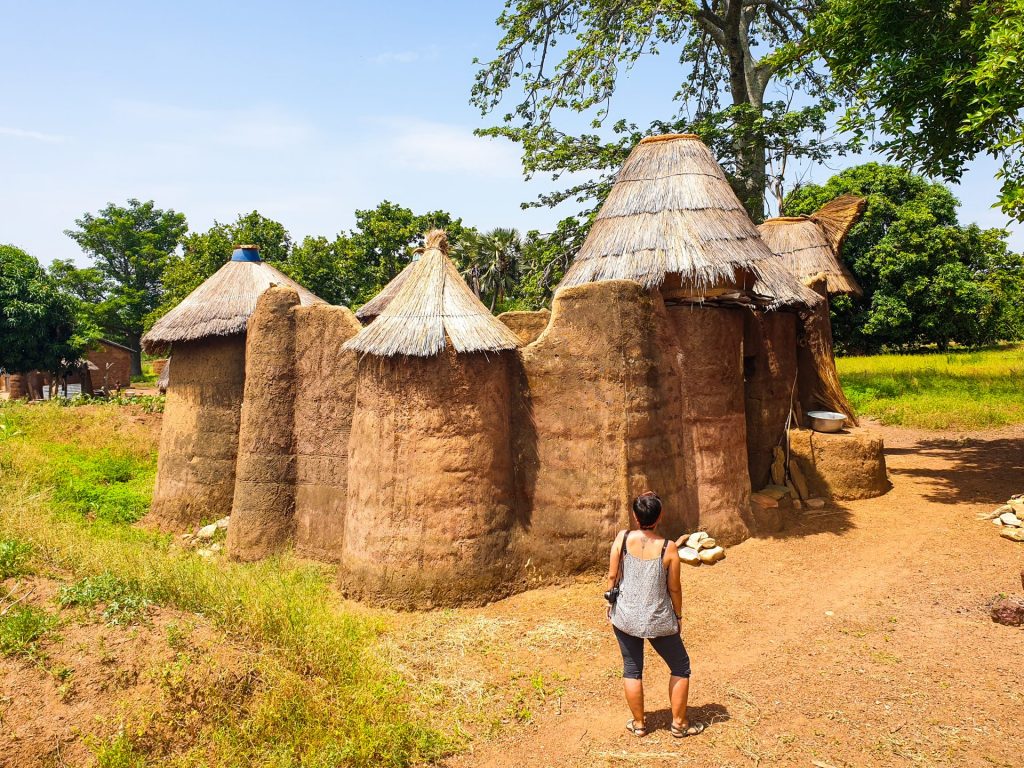
These houses have a very lively history, because today the Otamari people still live there doing their daily routine. We could see how a child left the house crying after a small booing, or how a woman was preparing the shea fruit to prepare the butter, or how another woman was decorating her house with the geometric shapes of local scarification. It was amazing to be able to experience all this during that early June afternoon in northern Benin.
We continued hiking through different somba tales and fields, and then decided to turn back and ended up back on the road, a little beyond where the bar and school were. We went back to Alphonse’s house, but before that we found a family who were preparing the yam, one of the most important tubers in that area. In order to knead it, they chop it with a trunk in a funnel-shaped bucket; and in this way they manage to crush the tuber and then scald it with water and have the puree done. Two people were pounding with their trunks in a symphonia of sympathetic efforts. His arms and movements converged in total synchrony, his feet still and his trunk moving slowly. A totally African picture that we had seen in many countries that we had toured the continent during our sabbatical.
We returned with Alphonse and took the opportunity to eat yam, the tuber we had seen prepared in one of the neighboring houses. Since there was no light in the village, when it got dark it was time to say goodnight and go to our little room, located in a historic tata. We felt lucky to be able to sleep in a space like this, so special for the Pays Betammaribè, and at the same time so magical for the shape of its construction and for all the environment that surrounded us.
Cuddled in our sleeping bag and after trying to find the best place to sleep on that soft mattress, we closed our eyes in that small town in the north of Benin thanking us for everything we had experienced that day. Finding places like this in the world was one of the gifts we were looking for during our trip to Africa and, in that tata, we had achieved it. Many thanks!
DAY 3: We woke up a little sore. Despite being in such a somba tata and in such a special place, this had not been one of our best nights. We struggled to maintain the position on that crumbling mattress and slept little. Luckily, it had become quick by day, so it was time to get out of our nest.
Outside, Alphonse was waiting for us, with whom we said goodbye and thanked us for opening the doors of his house. We headed towards the main road and from there waited for a car to pass by to take us to Boukoumbé, our next destination.
While we were waiting on the shoulder of the asphalt road, a teenage girl suffered an epileptic seizure and fell to the ground injuring her forehead and legs. Once the attack happened, we took out the first aid kit to dry her wounds while the men near the bar told us not to do anything, that this girl was a crazy person with no future. Unfortunately, in Africa everyone with mental or physical illness is rejected by society. After this small incident, we kept waiting until after a while, a shared taxi took us to Boukoumbé, the last village before Benin before crossing into Togo.
The road was all asphalt, in very good condition, while we passed through more villages like Tagaye with different tatas in a very rural environment. We arrived at Boukoumbé, which already looked like a larger village. It had different food stalls on the main road, a police station and different uralite roof houses around it. We walked to a place that Euloge had told us, the guide with whom we went to discover the different ethnic groups such as the Holi or the Fulani (if you want to know more click here), where we could find Valerie who could accompany us to discover different Tapas in the area.
We arrived at Tata Victor Koubetti, and there we found a very large patio with different tables prepared and, in the kitchen, they were preparing a lot of food. We met Valerie who was very busy because they had to prepare a lunch that day for many people who came from a work conference, so we decided that we would not tell her anything about going to visit tatas. They prepared a breakfast for us and accompanied us to our accommodation, which was located in a modern hotel that was a hundred meters from where we had breakfast. Our room had shower and fan, so we took the opportunity to wash since from Cotonou we did not shower. In fact, in Africa we got used to showering a lot from time to time…
After showering with cold water, we went to the center of Boukoumbé where we ate in a small place next to the road, and where we met Bernard, a motorcyclist whom we asked if he could take us for a walk through different villages in the area to go and discover more tata. We negotiated a price and got both on the bike. The first stop was his home: a small tata somba that he was finishing fixing up waiting to move in with his family.
We took the bike again and between small trails we went north driving along a dirt road that had tatas scattered on both sides, between small agricultural fields. Every now and then, we would walk down a small path and go to some Tata to see it up close. In some of these, they asked us for a symbolic price in order to take photographs from the outside; And in some others, we took the opportunity to put into practice our favorite game of hands: a magic game where an object disappeared from one hand and ended up in the other hand in a very mysterious way.
That afternoon was the last afternoon we would spend in Benin. The best way to say goodbye was to walk those paths and those traditional houses that had thousands of years of history, in a quiet, rural and sensational atmosphere. Benin was a country that had surprised us very positively, and we were very happy to say goodbye from the Pays Betammaribè, one of the most emblematic places of this small country in the Gulf of Guinea.
Bernard dropped us off again at the accommodation. Beforehand, however, we agreed that the next day he would pick us up to take us to the police station to be stamped out of Benin and then taken to Nadoba, the first town in Togo. We paid for it and went to dinner at the same place where we had breakfast and there we had a pleasant surprise.
Next to our table, there were only three other diners: a couple of Catalan retirees with their guide who spoke perfect Spanish. This couple had hired a local tourism company in order to take a tour of Benin and Togo for a couple of weeks. This company was Loana Travel, of which Euloge was the founder! They had arrived that afternoon, and we were talking to them about the different experiences they had had in Benin. Before going to our accommodation to sleep, we were told that after two days they would go to Togo to visit a ritual of change of stage that was known as dance des fouets. We asked the guide if he could give us more information, but he told us that he didn’t know for sure yet and that he would find out the next day. We exchanged our phones just in case, as we had not yet seen any rituals in the Pays Betammaribè and we were looking forward to seeing some!
DAY 4: We woke up after having slept like angels. That bed was super comfortable, the fan cooled the atmosphere and we had rested wonderfully. We went to breakfast, but we no longer met the couple of Catalans since they had left early to discover different tata and see how they made shea butter. In fact, we started the day a little late, but we had to rest after all the accumulated fatigue of those days in northern Benin.
We wrote to Bernard to come pick us up, but he didn’t answer. After a long wait and when we saw that the money we had given him yesterday would disappear, we were able to talk to him and he told us that something had come out but that he sent us some friends who would come looking for us. In Africa, things go day to day but in the end you always find a solution.
Two motorcycles arrived and we went, first, to the small police station in Boukoumbé where our passports were stamped, and we drove between small paths and passing by Tatas until we passed a military checkpoint. We were already in Togo! In any case, we still needed to travel a few more kilometers to reach Nadoba where we would find the police station to register our entry into the country. That border was the most rural we had crossed during our trip to Africa, with people entering and leaving without any kind of permit, stamp or passport. In fact, this border was artificial and had been made from offices in Europe, but in reality these villages were linked because they belonged to the otamari group: in Benin they were known as the Pays Betammaribè and in Togo, as the Pays Tamberma.
We arrived at Nadoba which was a small town with a lot of motorcycle movement. There, on the main road (there was no asphalt road), there was a small police office with three commanders chatting quietly. Our arrival was a surprise… Togo had opened its borders a few days ago after months closed by Covid, so they had to get up and take our passport details by hand. Things there are slowly done, so we had time to talk to the cops about football, about our trip, and about Nadoba’s village.
The policeman gave us a piece of paper that was kind of proof saying that we had entered the country, but we would not have the visa until we went to the Kara police station, which was the nearest city. So, we took some new motorcycles and Togo welcomed us with one of the most beautiful trips we had made in Africa. Fortunately, we fell well with the policeman because he was angry with a motorist who wanted to charge us extra and looked for one that offered us a fair price: for 2,000 CFA we would make a one-hour motorcycle tour through the Koutammakou region until we reached Kandé, from where we would take a shared taxi until we reached Kara, our final destination.
The first hour we were on a motorcycle in Togo was like daydreaming. With a beautiful landscape, we crossed small hills and rivers, passing by tatas of the Pays Tamberma that were known as tekyete but maintained the great construction we had seen in Benin; driving through agricultural land where we see how people worked the land with their own hands; and advancing along an idyllic dirt road that not even our imagination could have created. It was a magnificent tour that imbued us with freedom, longed for happiness and encouraged us to discover a new African country. Welcome to Togo!
After an hour packing on the motorcycle, the presence of more vehicles indicated that we were already reaching the end of this beautiful trip. Suddenly, at the end of a straight line we found some people next to a hut that made the motorcycles stop. The motorcyclists told us that we had to give them money for using that road, but no one paid any fees except us, who were the tourists and the whites. After the tranquility of that tour, that stop upset us and we decided that we would not pay anything because we had not made any stops at the different tatas that we had seen along the way and, therefore, we had only been passing through. After much insistence and discussion, they let us pass and finally we reached Kandé, a village located on the N1, an asphalt road that crosses Togo from north to south.
There, it took us a short time to catch a van that picked up passengers and finally took us to Kara, our final destination. Once we arrived, we walked to Marie Antoinette’s apartments where we would stay and rest in order to settle in a new country, buy SIM cards, do all the visa paperwork and visit the Koutammakou region, also known as Pays Tamberma.
Since the day before we had been told that the next day there was a ritual of change of stage in the Pays Tamberma, we asked different contacts we had from that region if they knew anything about it. One, whose name was David, told us that there would be one in a small town but that it would be the following Wednesday. It was Thursday, so there were still days left to see this ritual. We did not like what the Catalan couple had told us, so we insisted and in the end we sensed that on Sunday there would be a ritual for a group of tourists, but on the other hand, on Wednesday, a ritual would take place in the Pays Tamberma where some teenagers will spend their adult lives performing a dance known as Dance des fouets.
Finally, we spent 6 nights in Marie Antoinette’s apartment waiting for the day of the ritual to arrive. There, we were able to process the visa in an office of an angry policeman who did a lot of theater in order to ask us for money but did not succeed; rest; advance blog work; meet Leopold, an older man who accompanied us to see different interesting points around Kara; and prepare the next days of our trip. If you want to know what is there to do in and around Kara, you can click on this link.
DAY 5: Wednesday had finally arrived and that day we were sure that in a small town in the Pays Tamberma the dance des fouets would be celebrated. We woke up after a rainy night… We had met at six in the morning with Kamue, a friend of Leopold’s who had a taxi and would take us back to the Pays Tamberma. However, Kamue never showed up and we had to go to the taxi rank to find a solution to get to the Koutammakou region. That day was market day in Nadoba, but all the vehicles had already gone out there… We were too late.
At the taxi rank, we met Alo, a man who accompanied us in his car to Bassamba, the town where we had been told that the dance des fouets would take place. Then, to return, we would get ready and find a vehicle that returned from the market to Kara. Since we had already spent many days in Kara, that night we wanted to sleep in Sokodé, a town located an hour to the south and so we were heading back towards the coast in order to complete our circular tour through Benin and Togo.
Alo was a very kind man from Kara, with whom we could be talking about the country. Fortunately, we had an arrival transport and he was also curious to be able to see that ritual. We went through the check we had found that day with the motorcycles and, probably due to the grey day it was, we did not find anyone claiming any tax for tourists. Finally, Google Maps marked the end of where David lived. Alo parked on the side of the road and we walked to his house.
David was a guide from the Pays Tamberma who had summoned us to his house. In fact, there were two David who acted as guides: one of them was a man with whom we had spoken and who had told us on the day that the ritual would be celebrated but who had not weighed us down; and the other David, who was a guy who fell better for us (despite not having met him). We arrived at his house located in Bassamba, and there we met some men who were just finishing a meeting. David told us that later the ritual would start and that he would come looking for us, but since the teenagers were still in the forest he did not know when it would start…
So we had to do something we had learned a lot in Africa: wait. We sat next to a spectacular tekyete. There, a man slept on a bench, while a flock of sheep rested in front of the house. Unlike the tata, that house had no geometric designs on its walls. Alo went for a drink in the car. He knew this was going to go for a long time.
We sat next to a large tree next to that mud building, and there we were chatting and playing with different children. Some girls made a ball with some threads and we played to see how many kicks we made to the ball without it falling to the ground. Other children were playing hand clapping. Others dragged an empty cart that was there… There were no adults and we were there surrounded by some children from David’s house not knowing what we had to do and when to wait.
We waited for a long time. In fact, we moved several times… We looked out at a place where there were some older children playing cards, we went back to the main road to see if there was any movement and there was only Alo sleeping in the car, we went to look out at the neighbors’ house… but no movement was seen that would make us suspect that the Dance des Fouets was about to begin.
On one of these walks along the dirt road where Alo’s car was, we met Valentin, a man who lived in that village and who told us that the ritual was celebrated in a town that was a few kilometers away. That it was not in Bassamba, but in a small town that was known by the name of Quaterma. We woke Alo, and asked him if he could take us further north. Since I didn’t know where to go, Valentin also got in the car and the four of us drove along paths until we reached a place where we were beginning to see a lot of movement of people. Now, we arrived at the place where the dance des fouets would be held.
Alo parked the car on an esplanade, and we walked to under a tree that was full of parked motorcycles. From there, people walked along a small path until they reached the side of some tekyete in a small village (which must have been Quaterma although there was no sign) where there were many people waiting. Suddenly, from a distance, a series of teenagers appeared advancing with priests and entering one of the traditional houses… Quaterma had been filled with people. In fact, we must have been more than a hundred people there waiting for this special ritual for the otamari people to begin.
The teenagers left the house and people began to go in a circle to see the beginning of what is known as dance des fouets, where those who want to move on to the adult stage must demonstrate to society that they are prepared and, for this reason, whipping each other with long whips. Some of them were prepared with motorcycle helmets to protect their heads, others wore shields made of badges and others wore hats…
They started pairing two at a time, and then they started whipping each other… First the one, and then the other. He who began took a breath, and waited for a time which surely became eternal on the other, before extending his arm upwards, pulling the whip high and pulling it hard into the body of the other. In fact, the force was so strong that the noise of the air could be heard perfectly as if it were that of the hum of a bee.
The other, with a frightened face, tried to figure out where the blow would come from, and with his shield protected himself from receiving a good chew. The face he made seconds before receiving that blow defined very well how that person felt: with his eyes squinting and his teeth pressed between them, he hoped that if he was touched by that batzac, at least, he could bear the pain in front of everyone.
Many times, with the shields or the movements they made, they could save themselves from being hit by the whip. But others did not suffer the same fate… Some had blood marks on their backs in line shapes, implicit proof that he had received good whiplash. Others received a small blow to the shield and then prepared to return to the other all the energy and anger he had expended with him. There were no friends here, and everyone whipped hard between shouts when someone got too close to the audience in the circle or when someone strayed too far from the couple.
Seeing that ritual was something we would never have imagined, but in the Pays Tamberma they still maintained an ancestral tradition and some boys next door told us that they too had gone through the same thing. People were exalted, clapped, lectured, squealed and many, with their phones in their hands, recorded each other’s blows while laughing when someone received loudly and getting angry when someone got too close to the audience.
After a while of blows, we found David from Bassamba who came and told us that he had come to look for us at home but that we had already left. The important thing is that in the end we were able to get there, although we were speechless from what we were seeing, trying to understand that tradition from a broad point of view. Alo was also hallucinating and recording everything he saw. Hours later, he would tell us that he took this stage step with Evala, a ritual that consists of a fight between boys where the objective is to throw your opponent to the ground.
We had been watching the dance since we were already watching the dance for a while, so we decided to leave for Kara again. Alo offered to take us back to Kara for the same price he had brought us, so in order to go fast and not have to look for transport from that small village in the Pays Tamberma, we decided to go with him. Before leaving, however, we had the opportunity to meet the other David, the guide who hadn’t done much of our weight.
He came to greet us, and when we saw him we recognized him right away. It was the person who was in the hut demanding money from us on our first day in Togo that we were riding a motorcycle from Nadoba to Kandé, and who we had refused to pay. We were laughing and in the end we paid him the 1,500 CFA per person as a fee to know the Koutammakou region. With that ritual we had witnessed, the paths we had traveled and the time we had enjoyed in that region, the price was the least.
We said goodbye to David and Valentin grateful to see one of the most impactful rituals of our trip to Africa; and we returned with Alo to Kara. With nostalgia, we also said goodbye to the tekyete of the Koutammakou region. Those architectural beauties of the otamari country had left us completely speechless. We left the rural world and arrived in the big city, where after lunch at Theresa’s restaurant, we took our backpacks and said goodbye to northern Togo to return to the coast. Africa was giving us many experiences that we never imagined to live, but, deep down, traveling is just that: leaving your comfort zone, opening your mind and receiving much more than you have given!

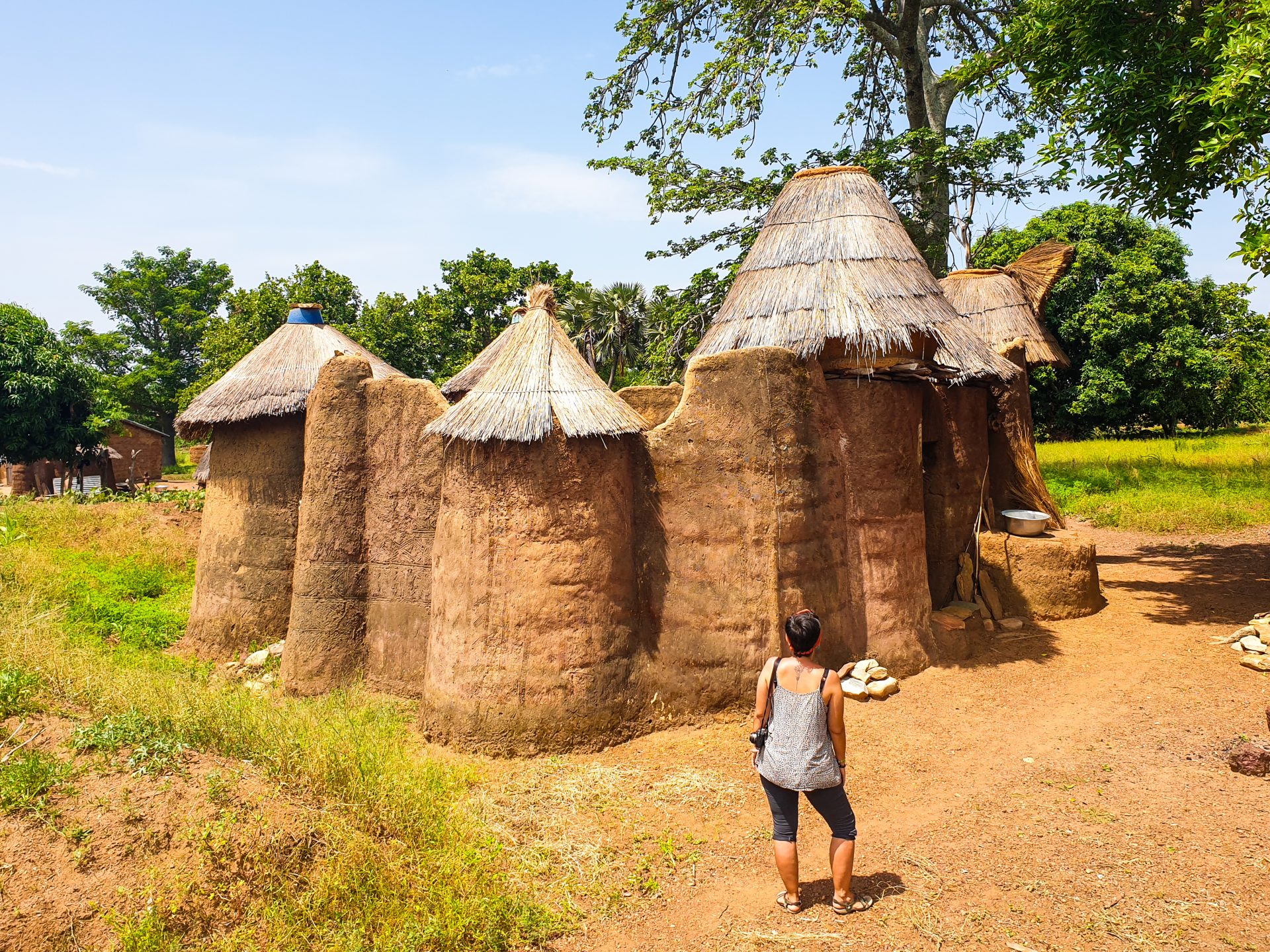

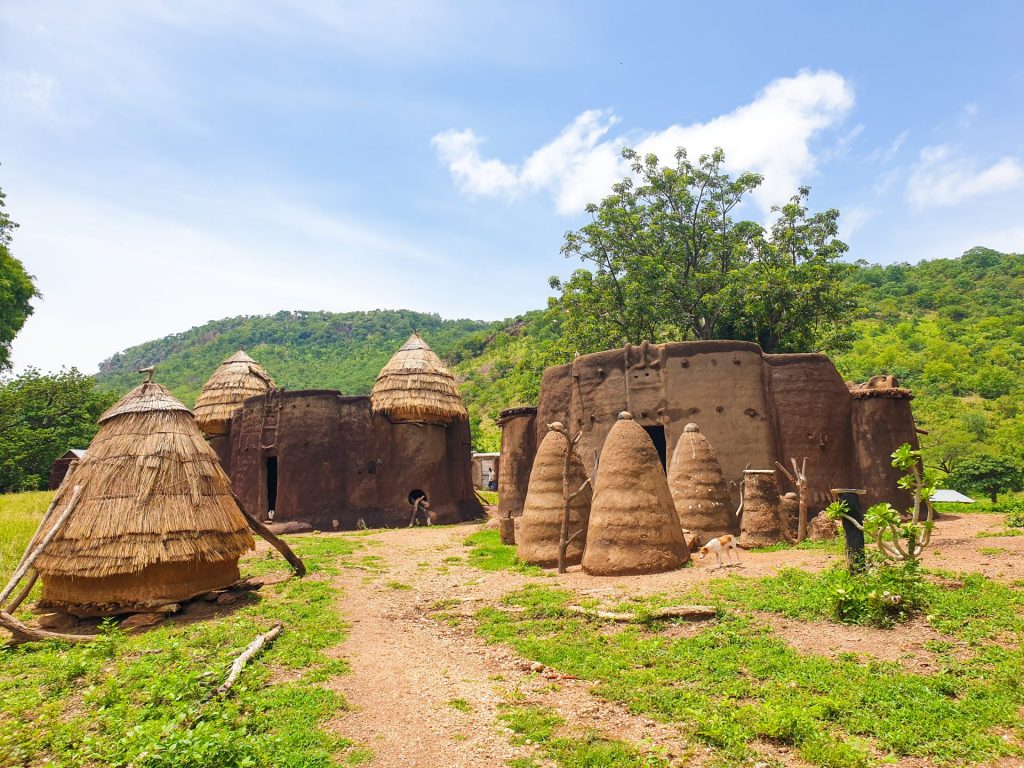


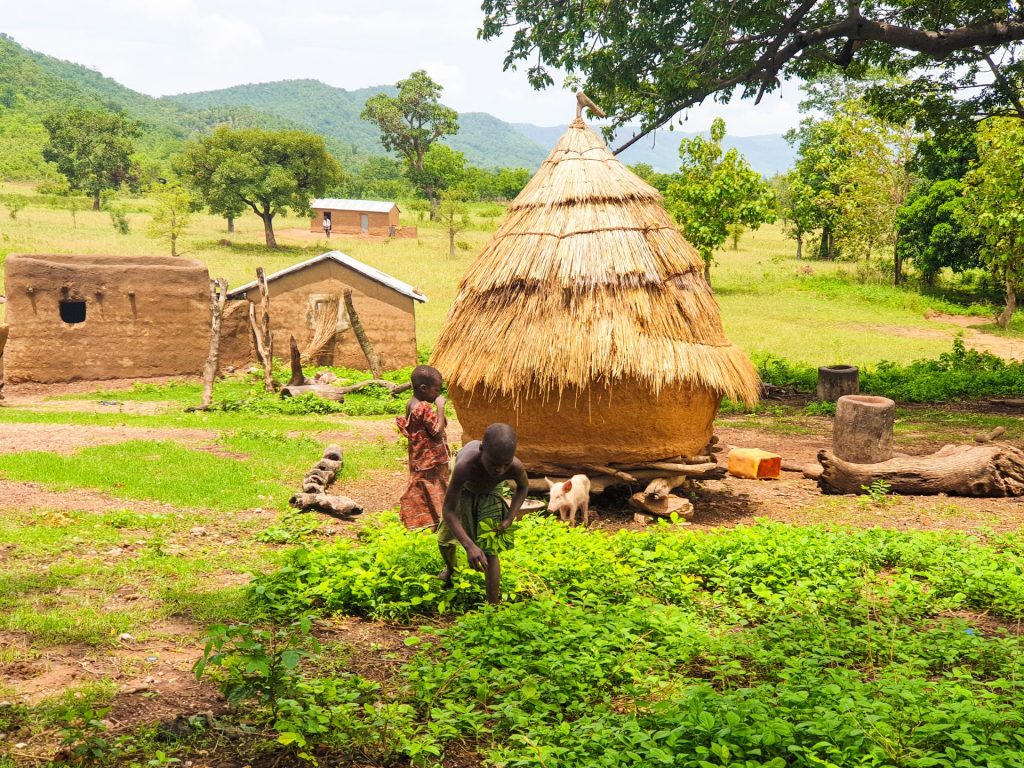
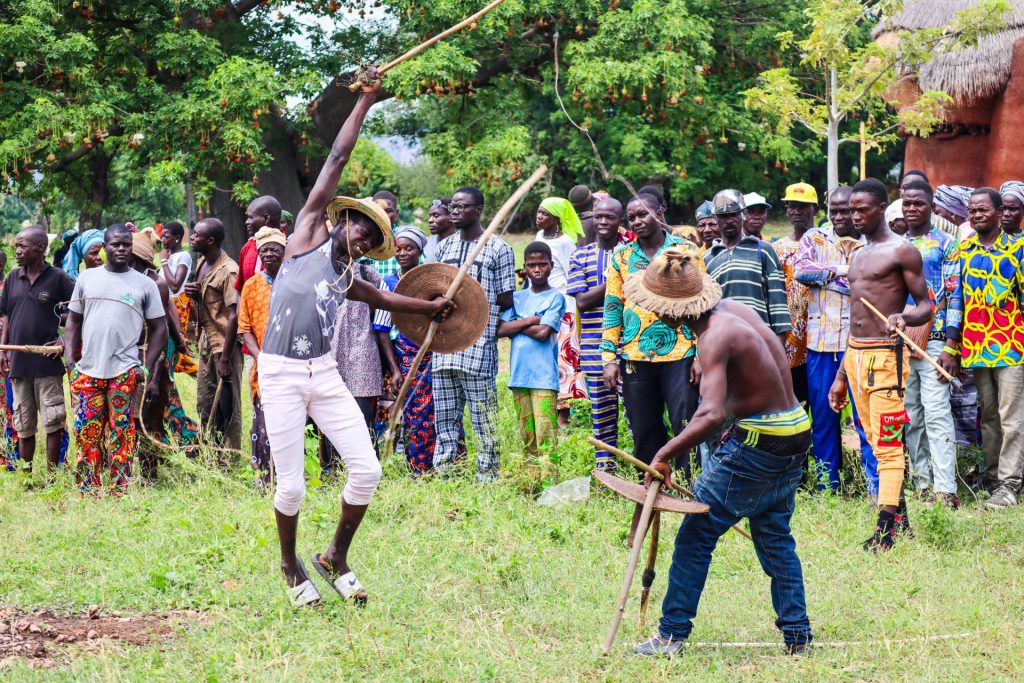
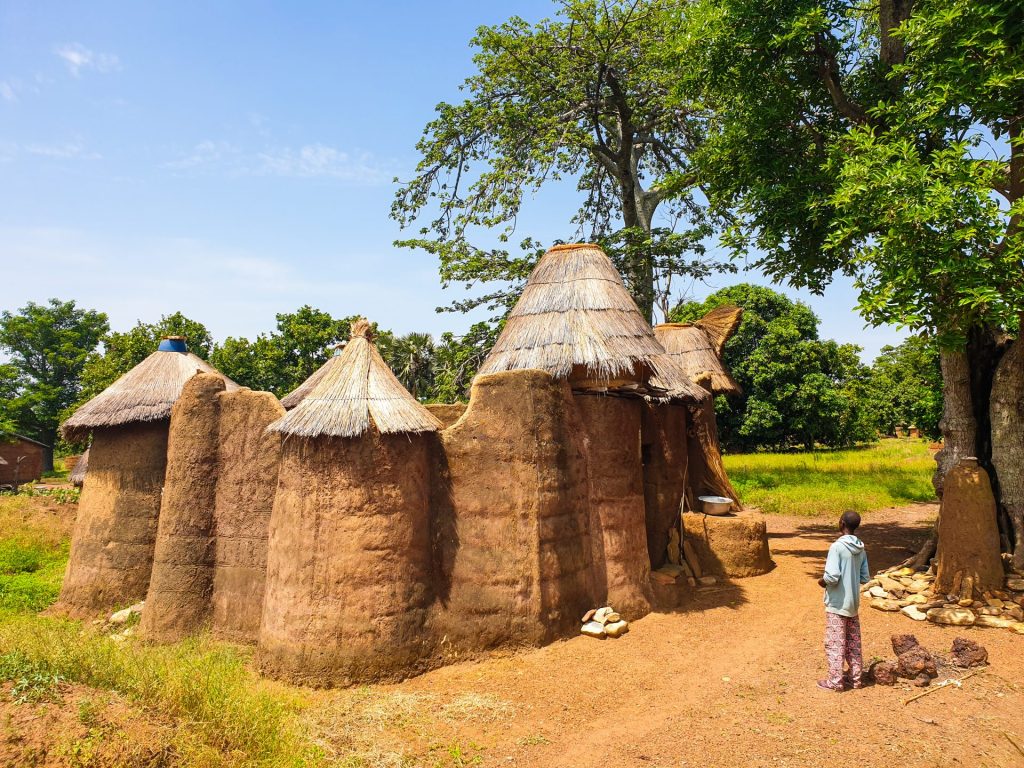
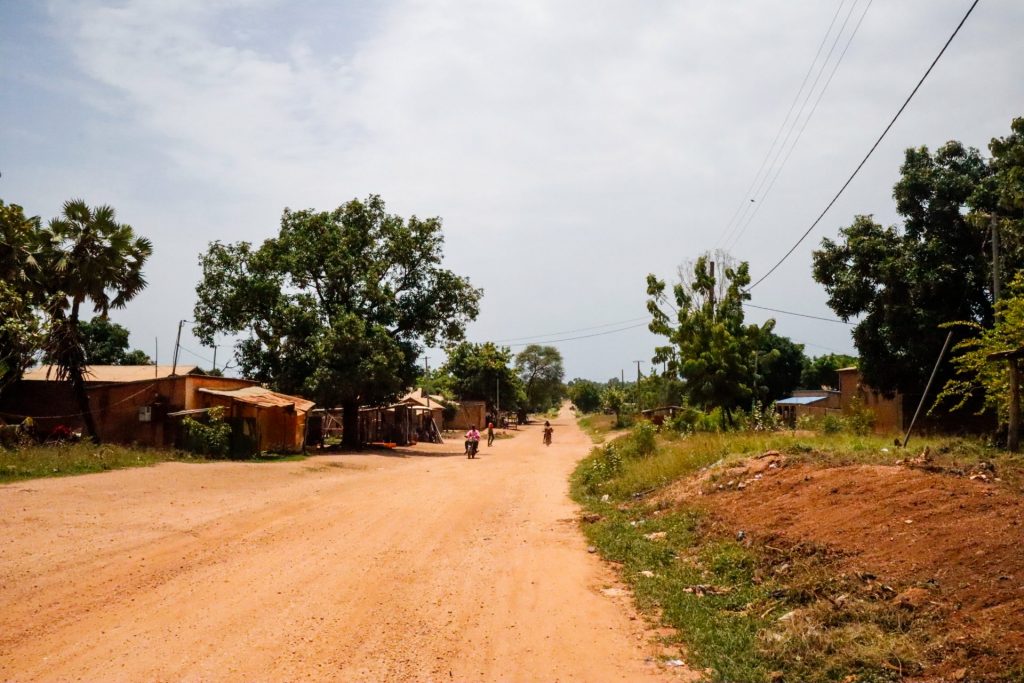
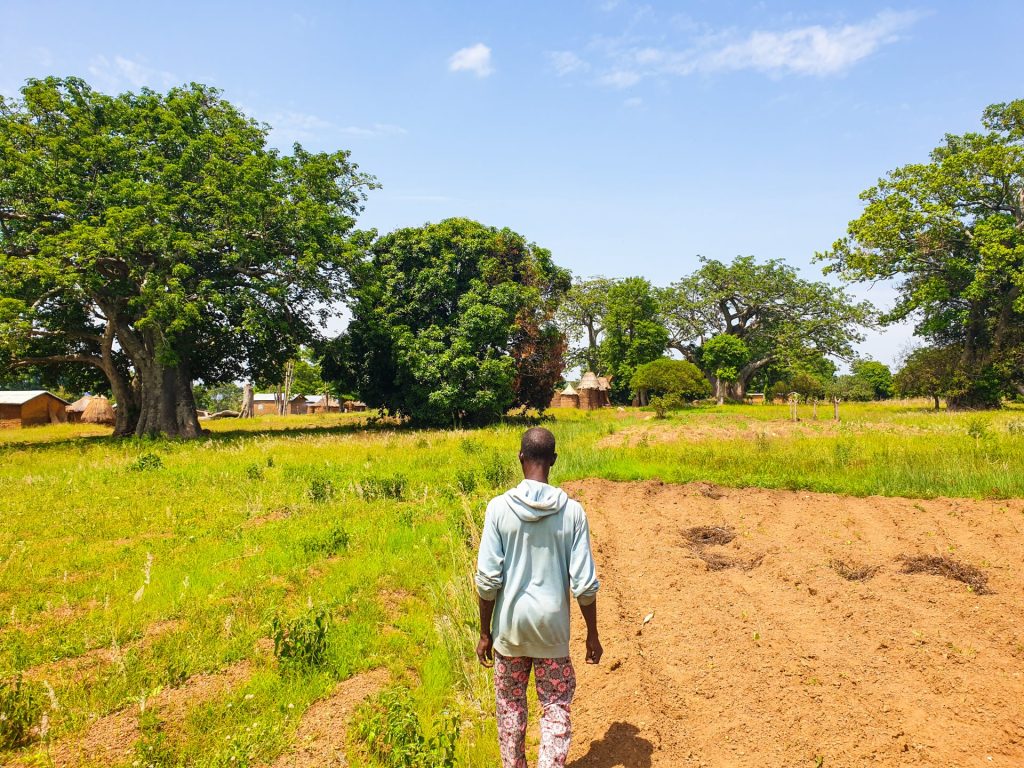


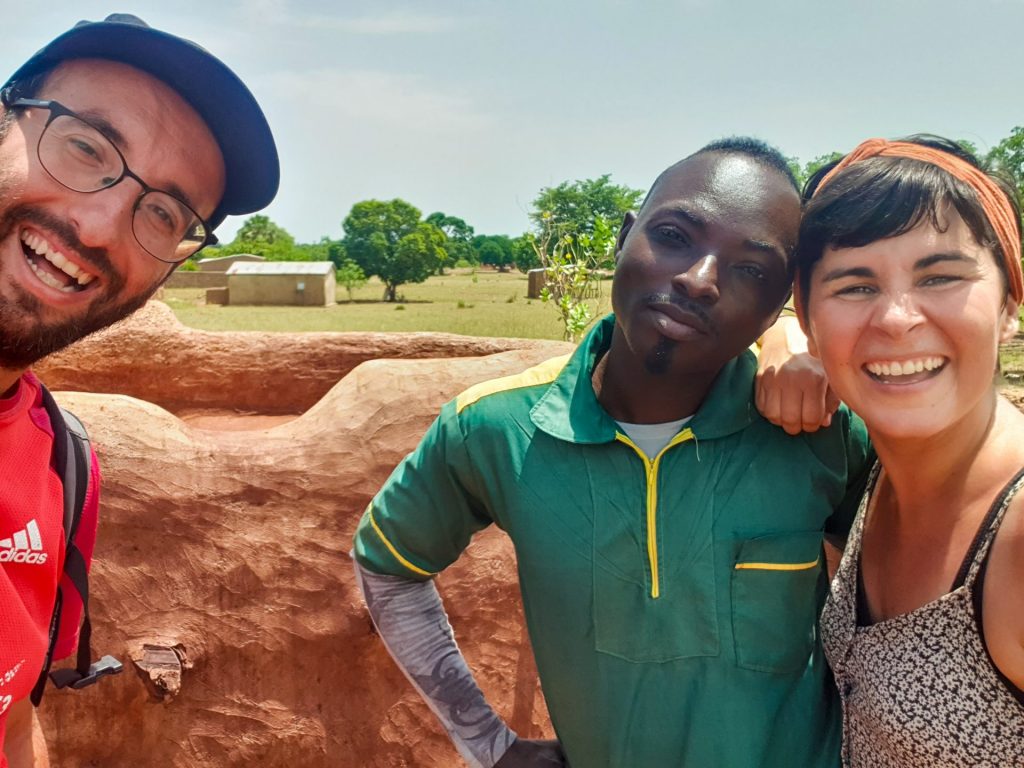









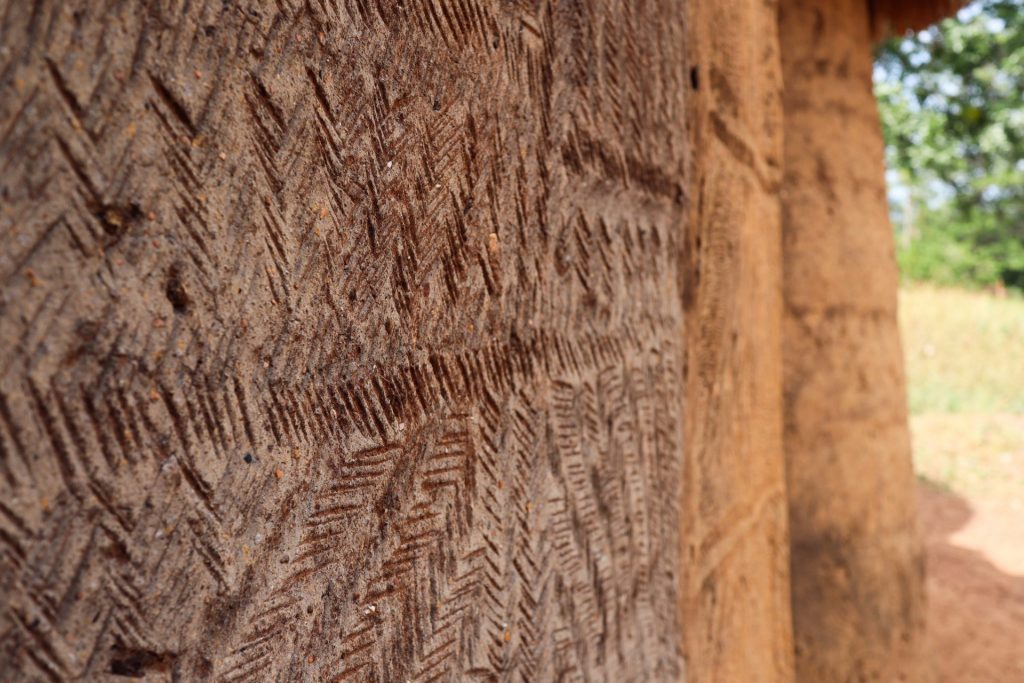





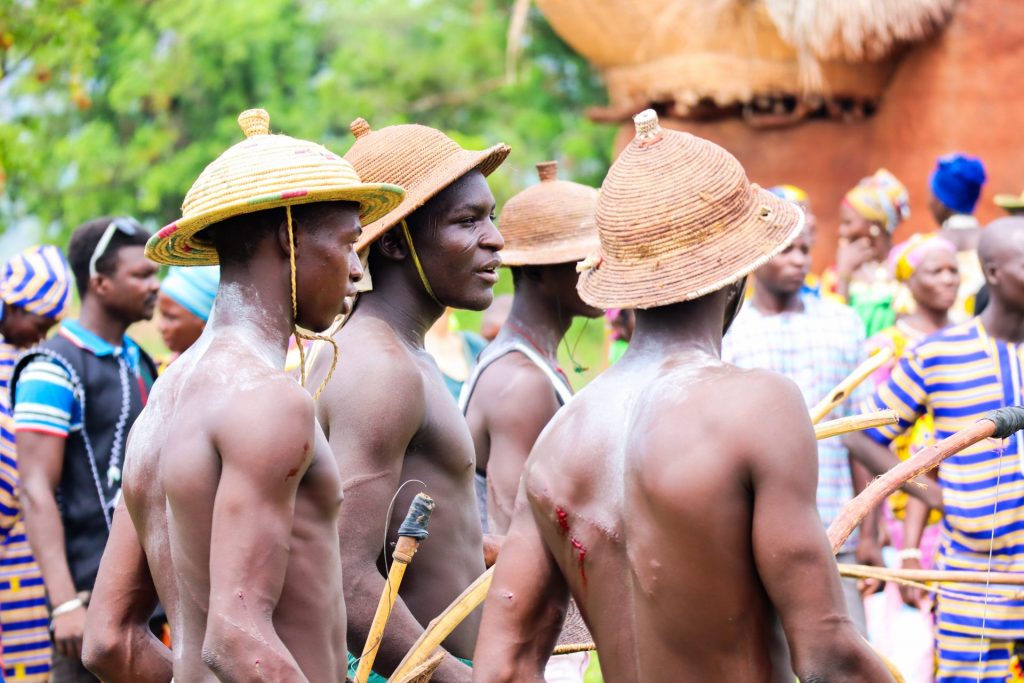

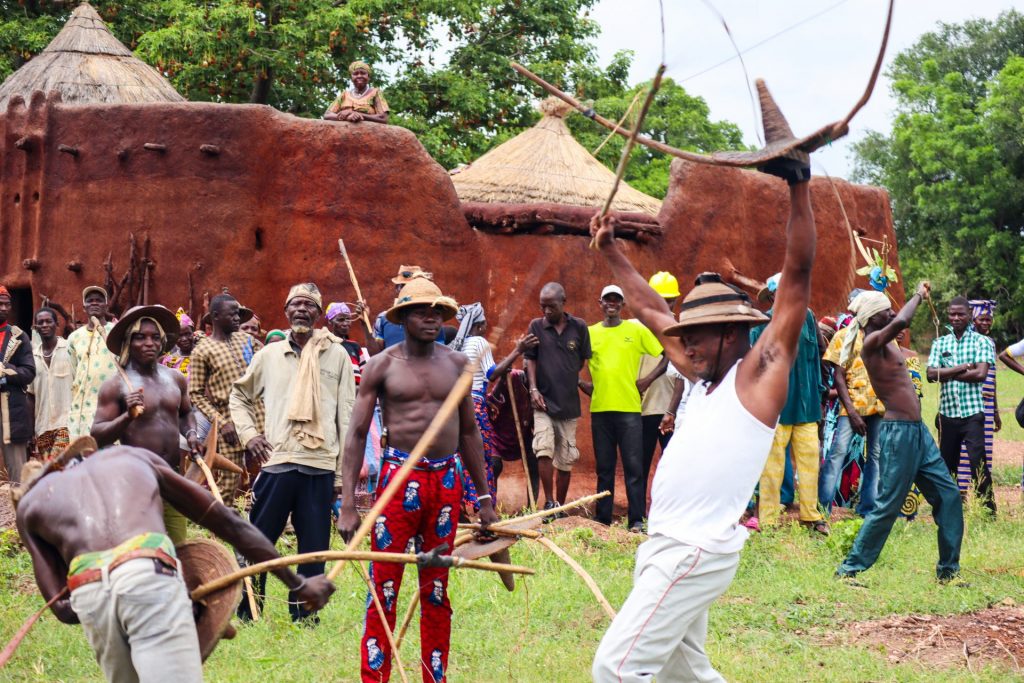

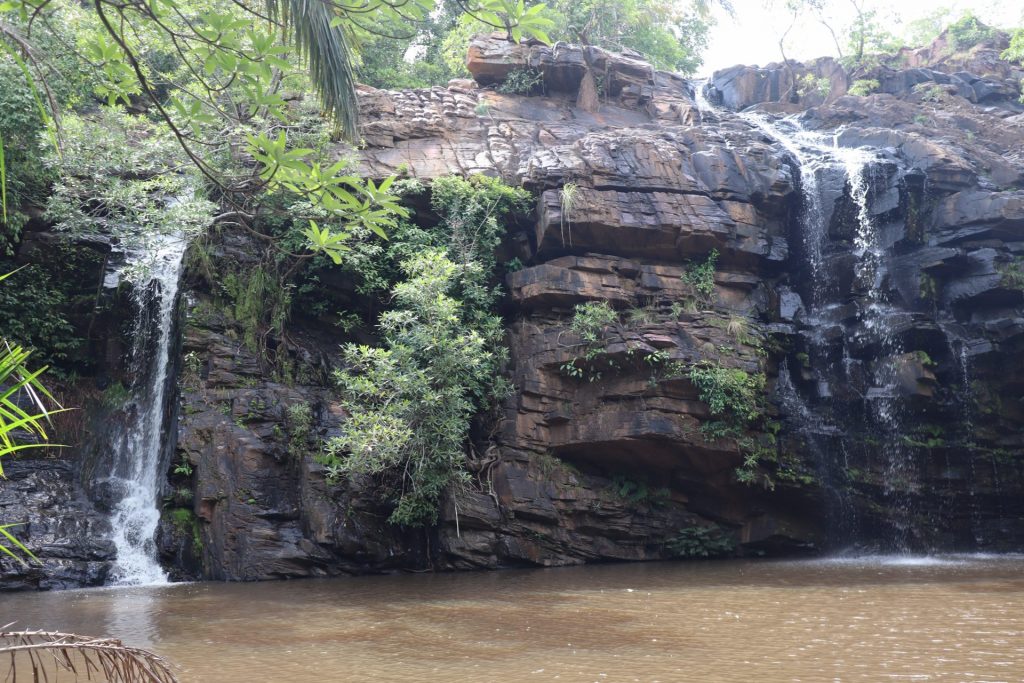
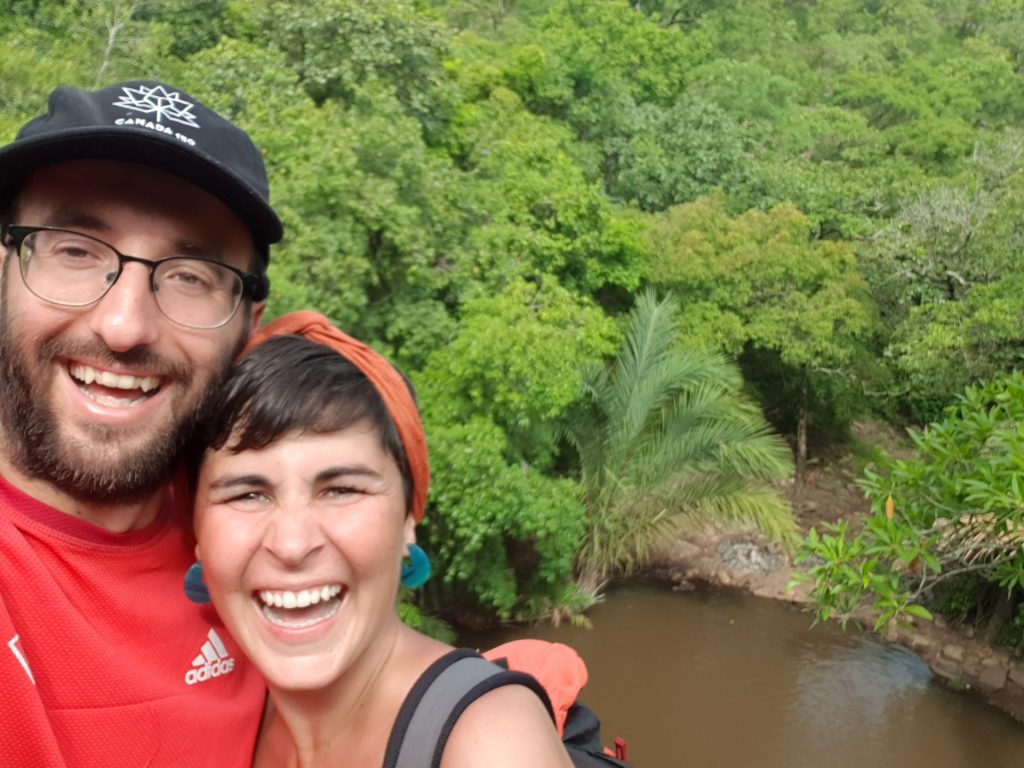
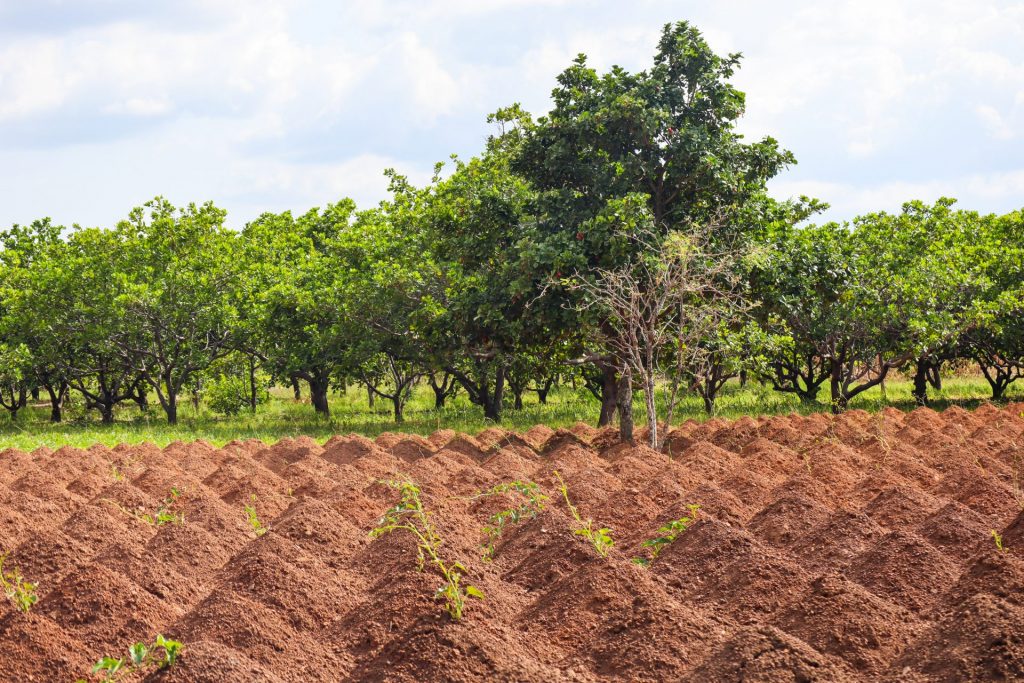
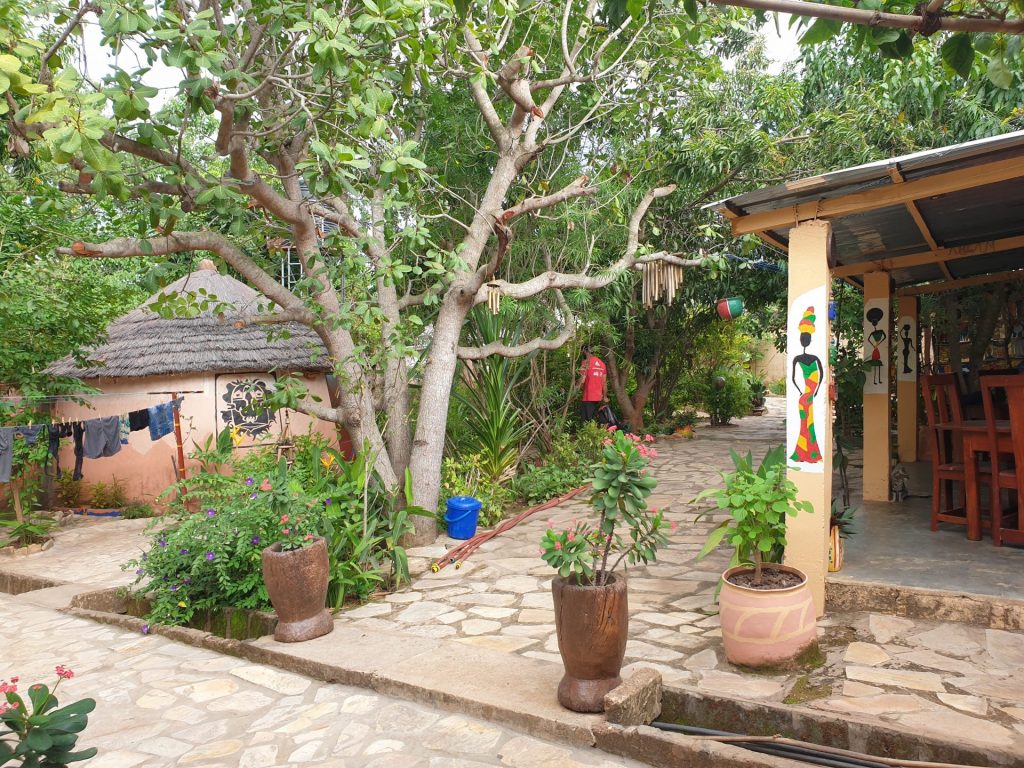


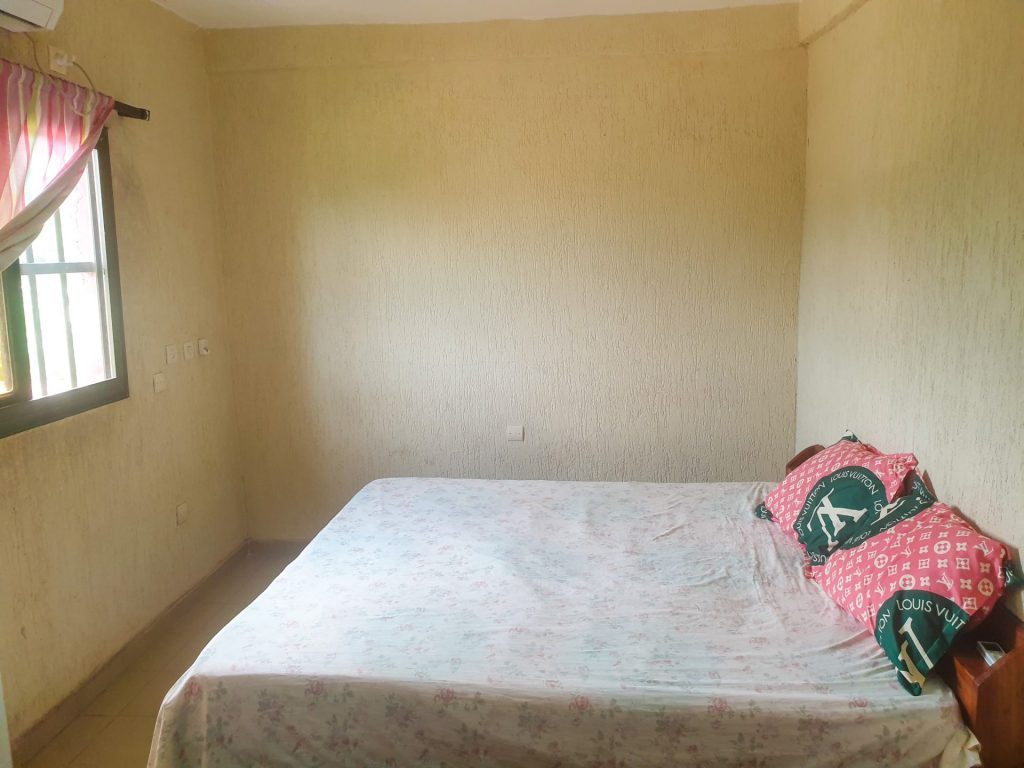
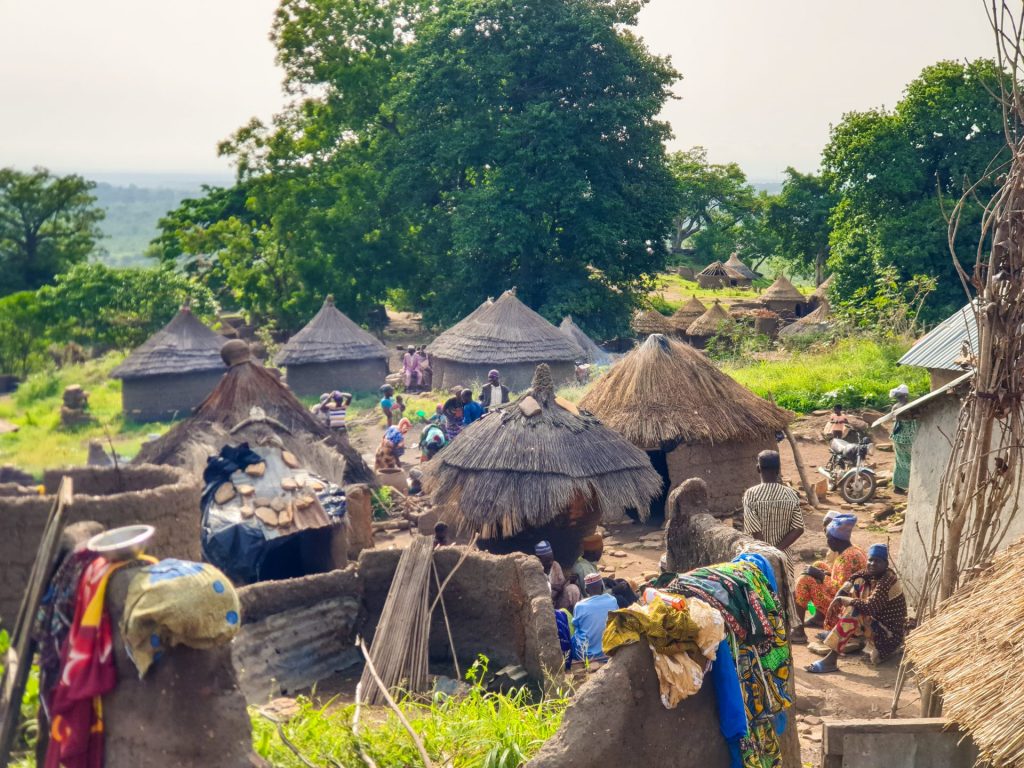

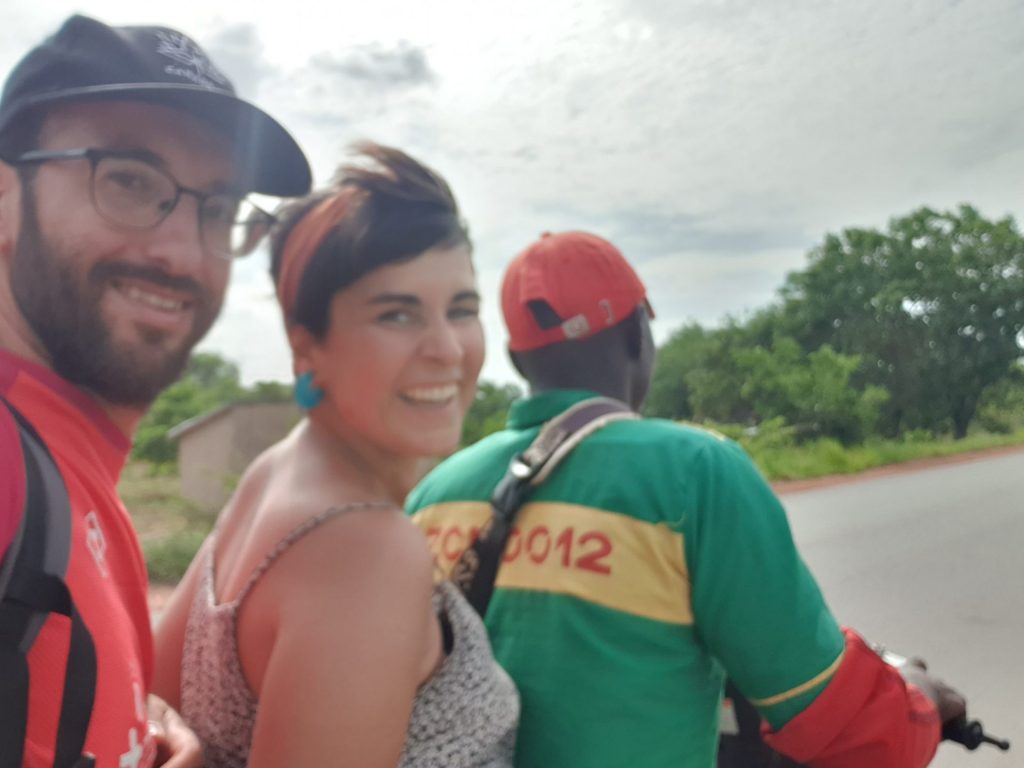

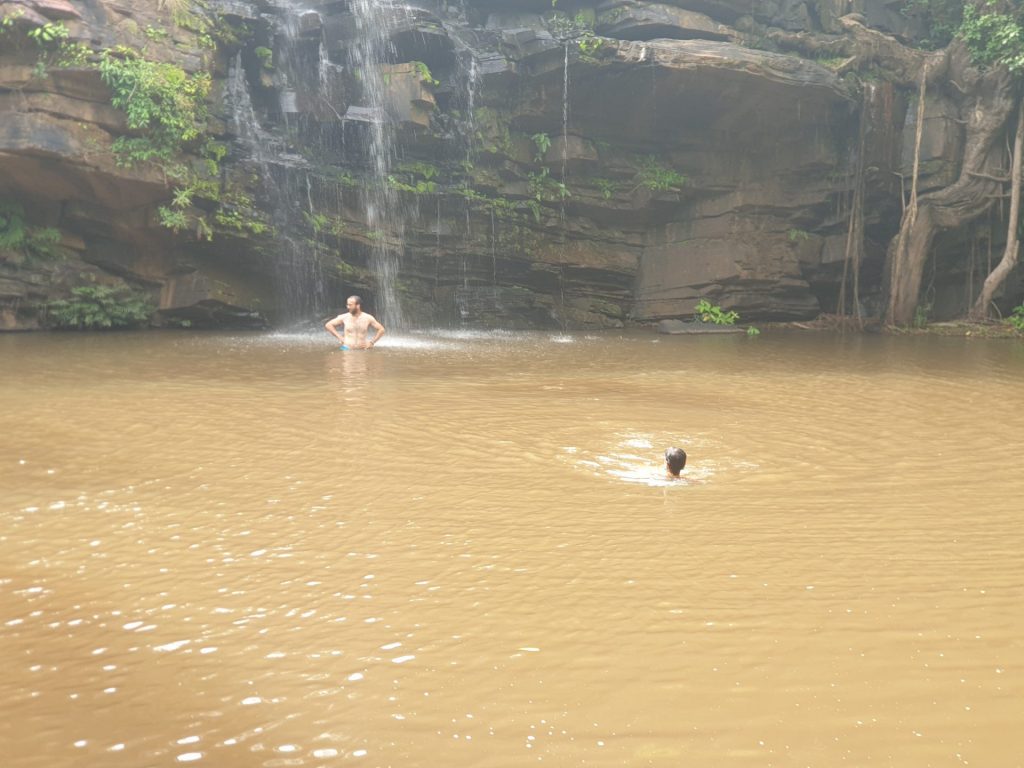


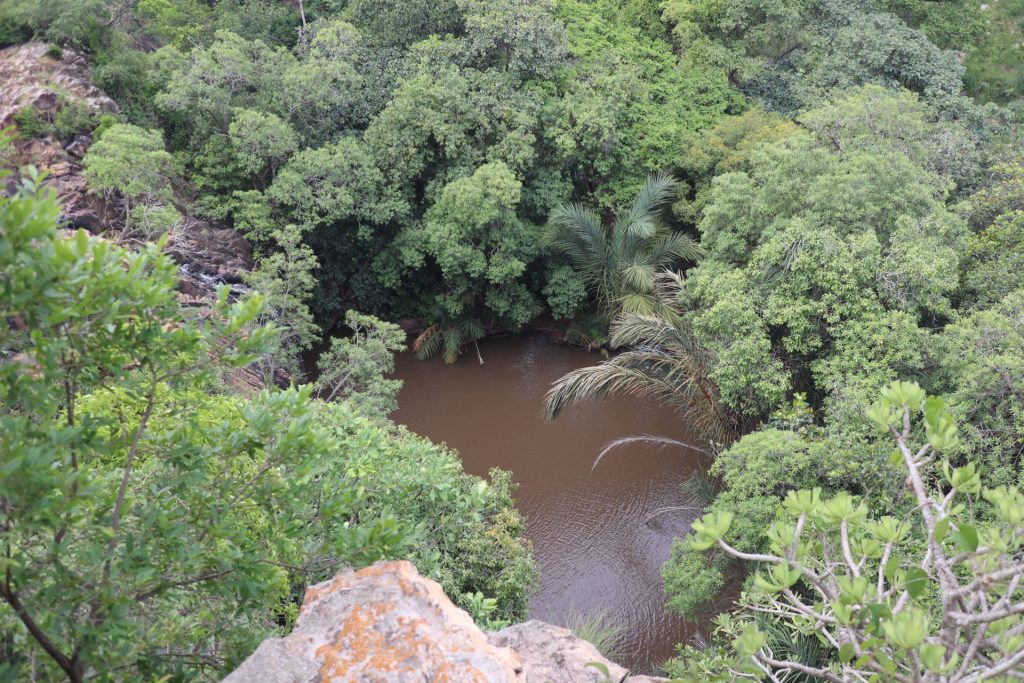
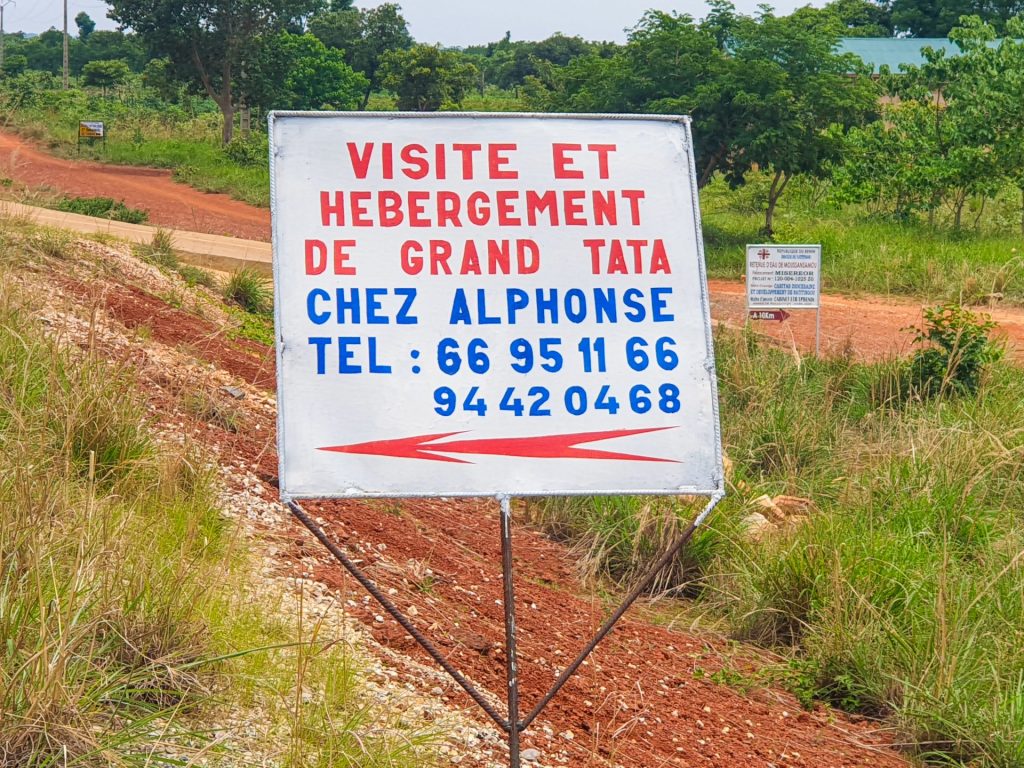

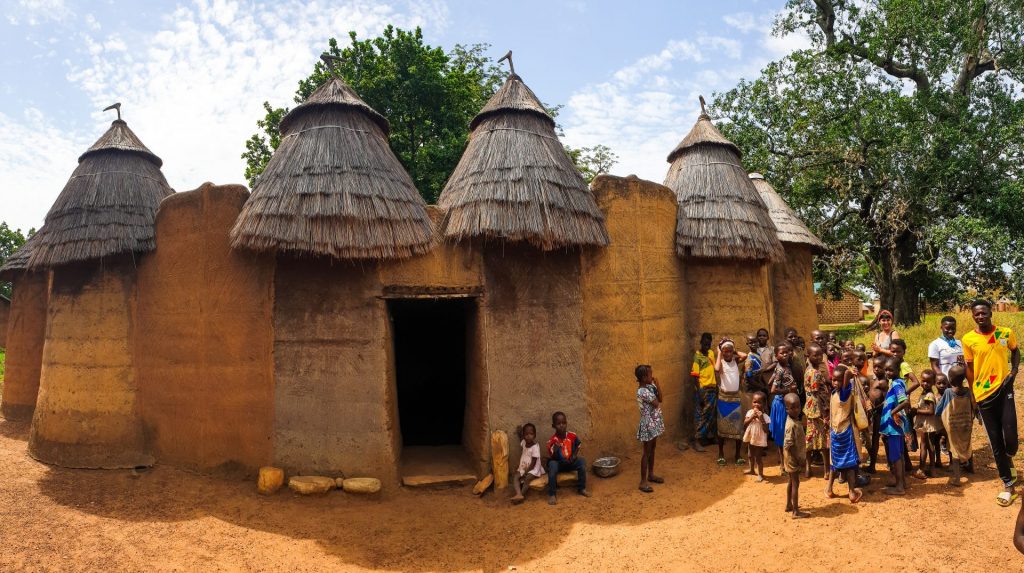


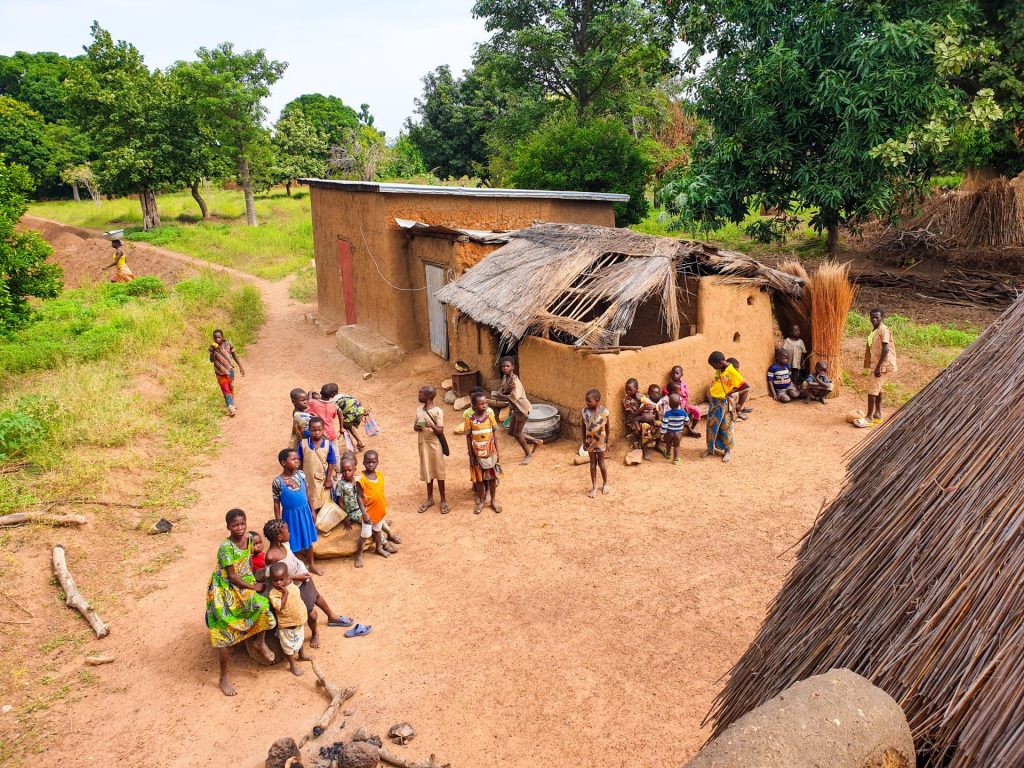

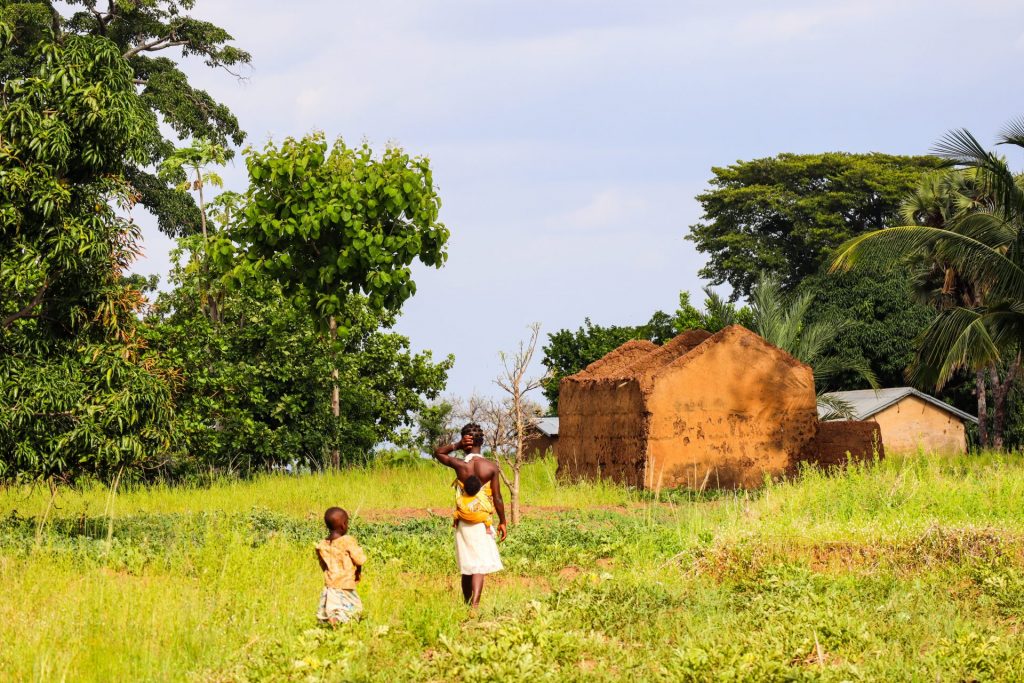





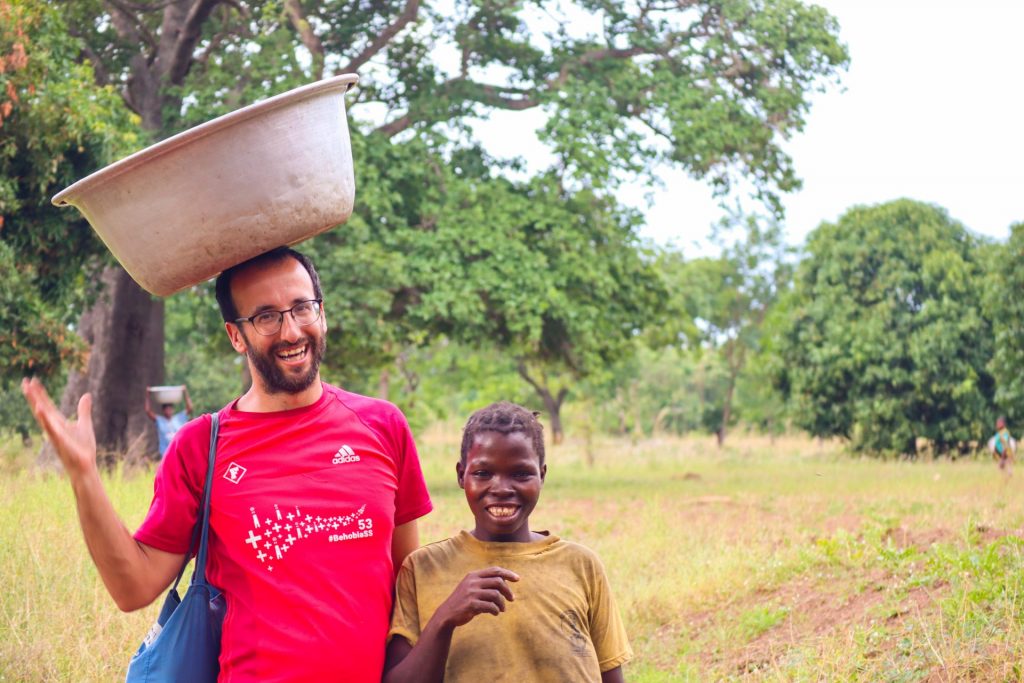


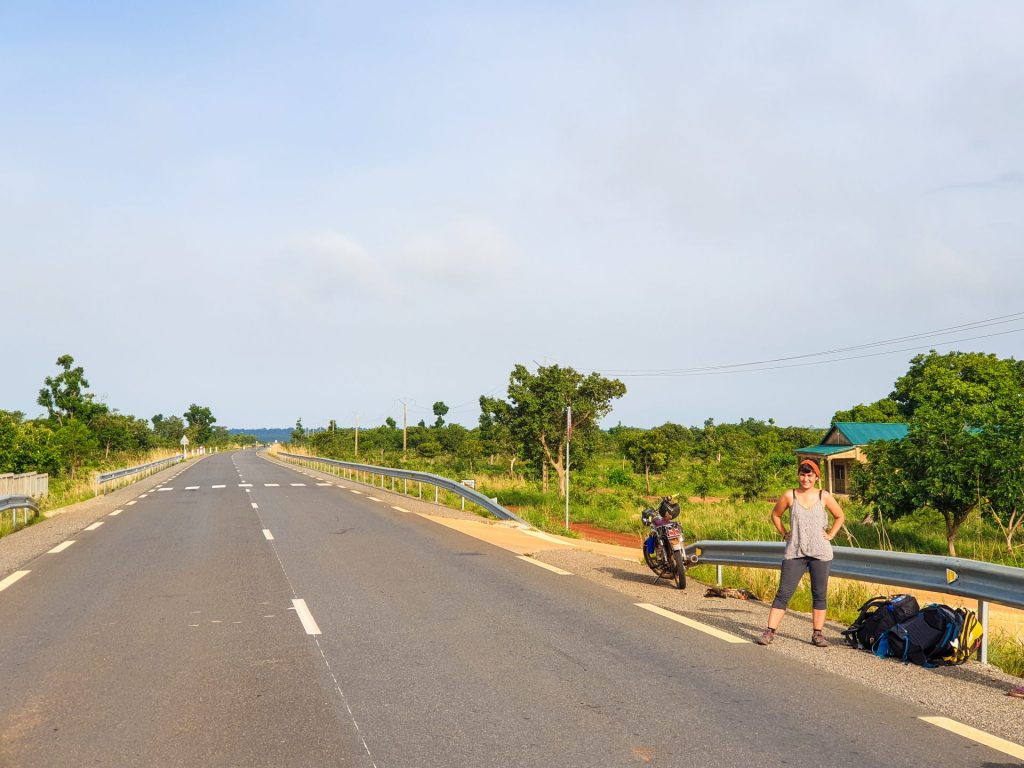
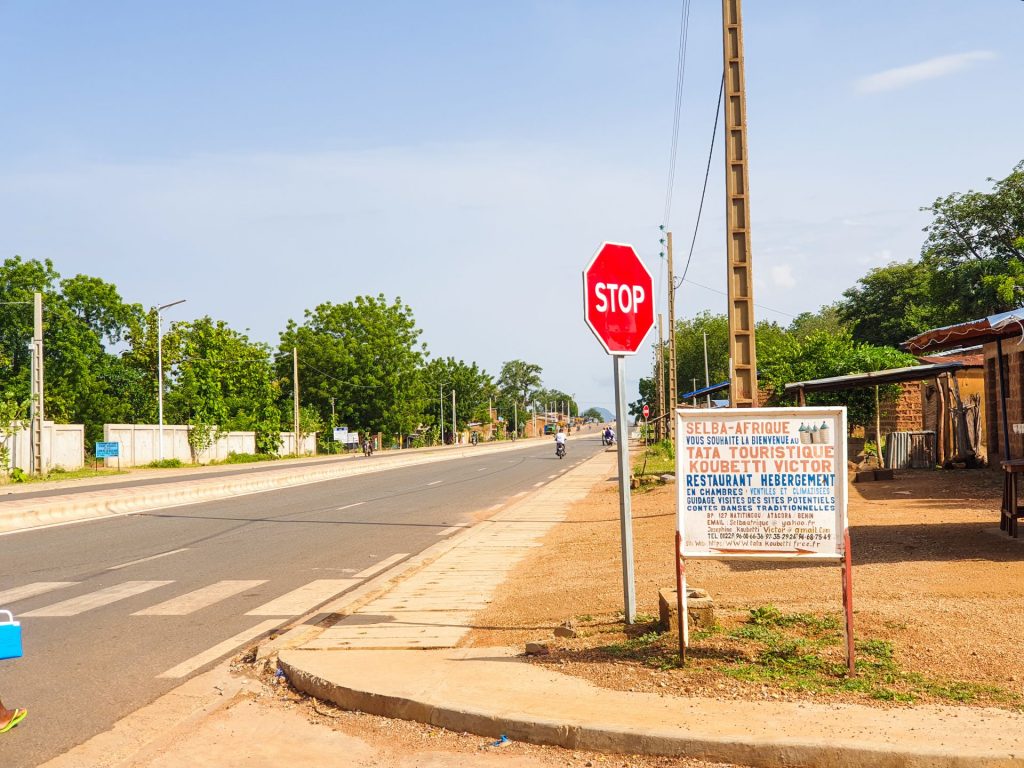




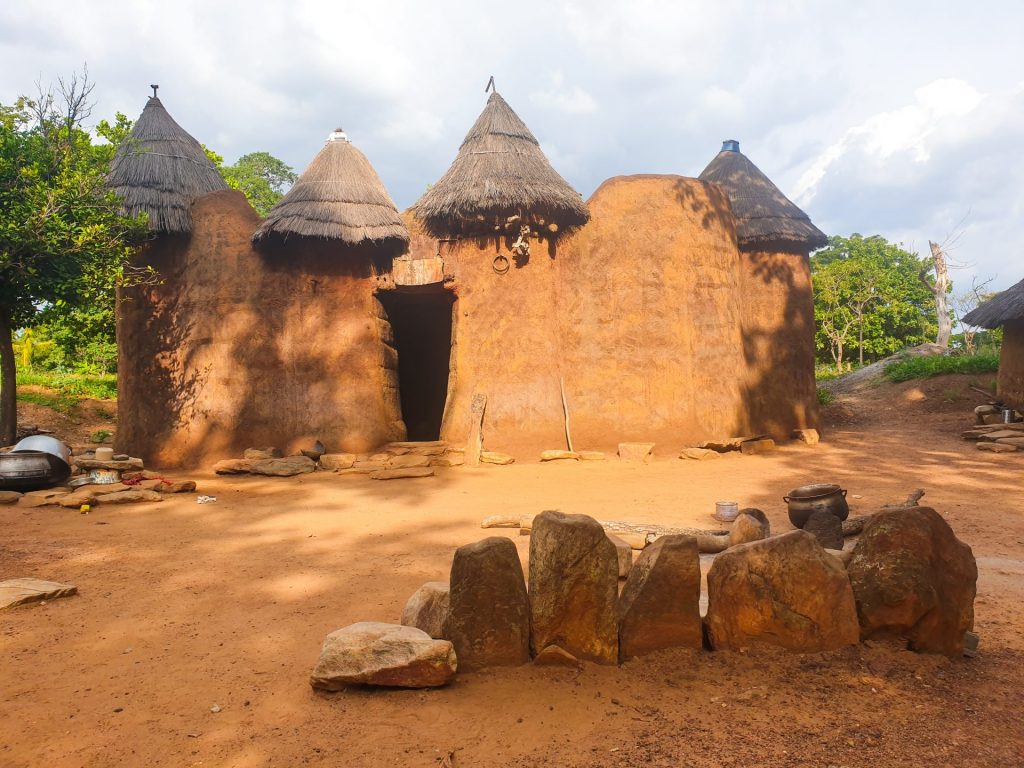

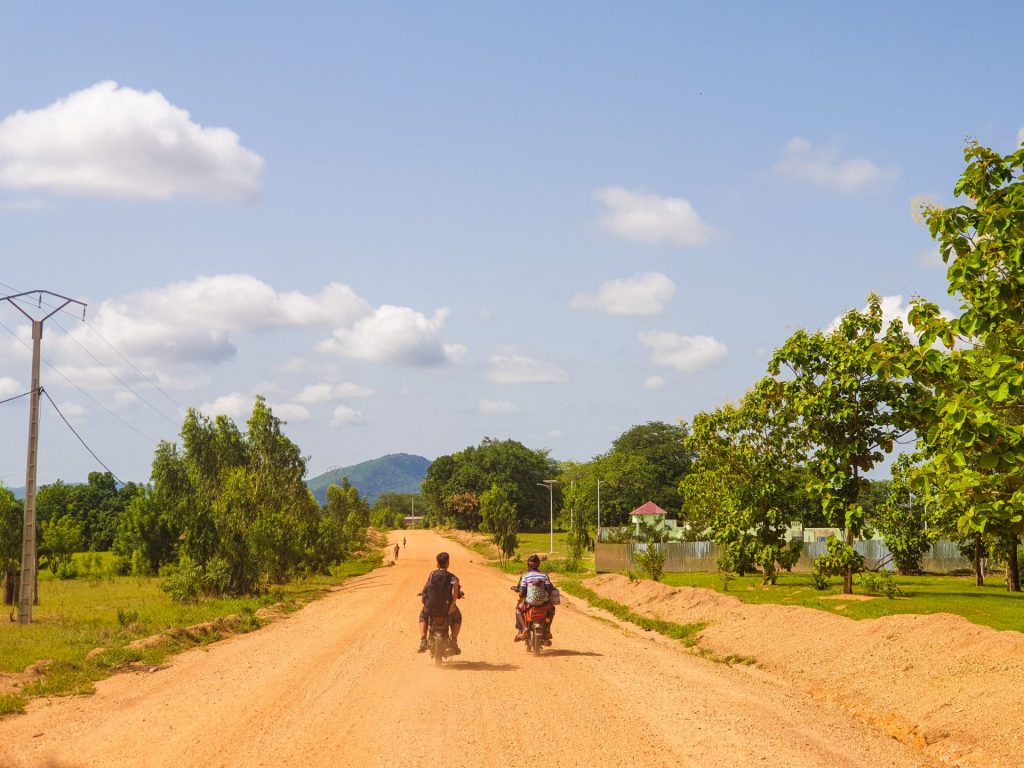
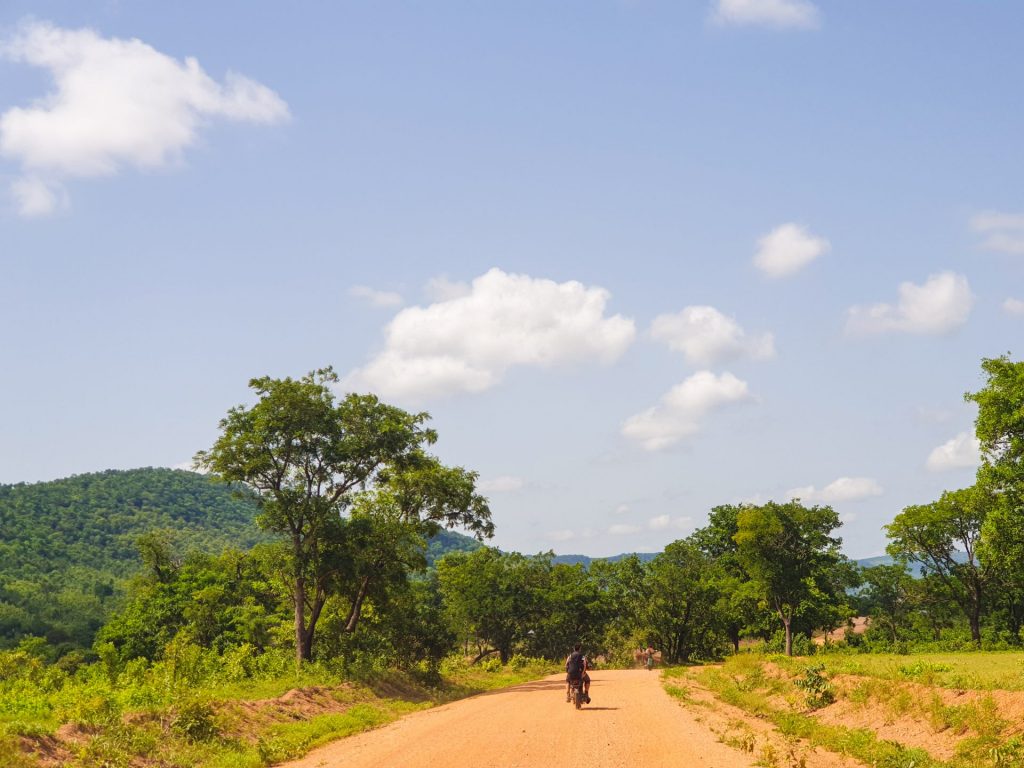
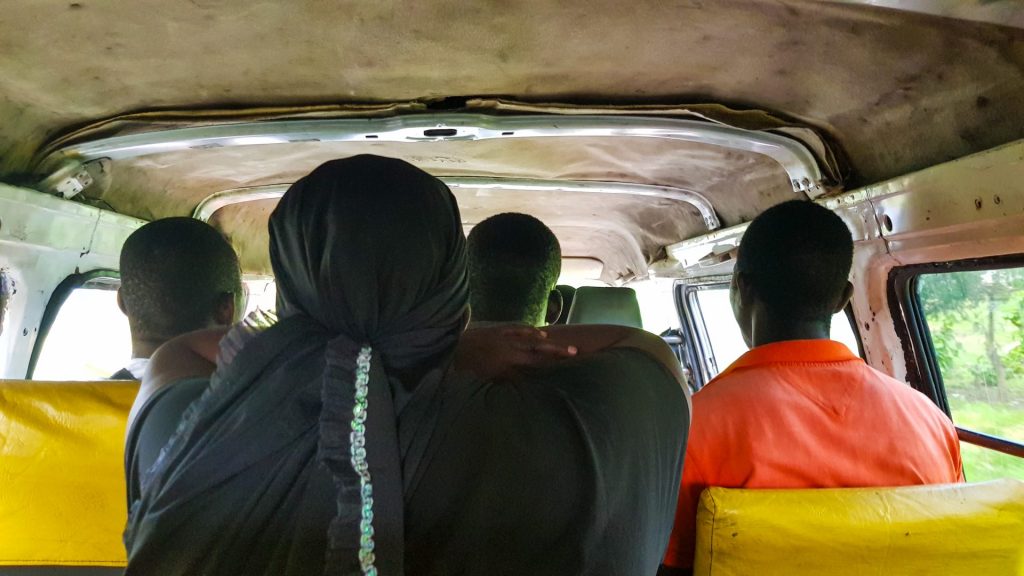


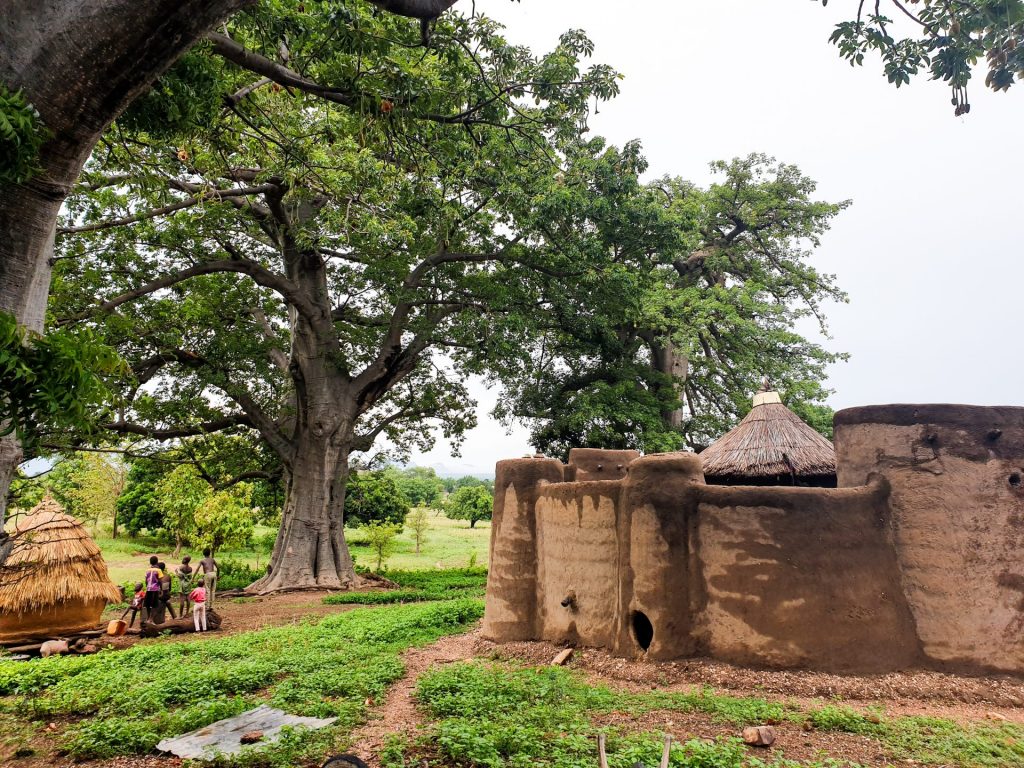
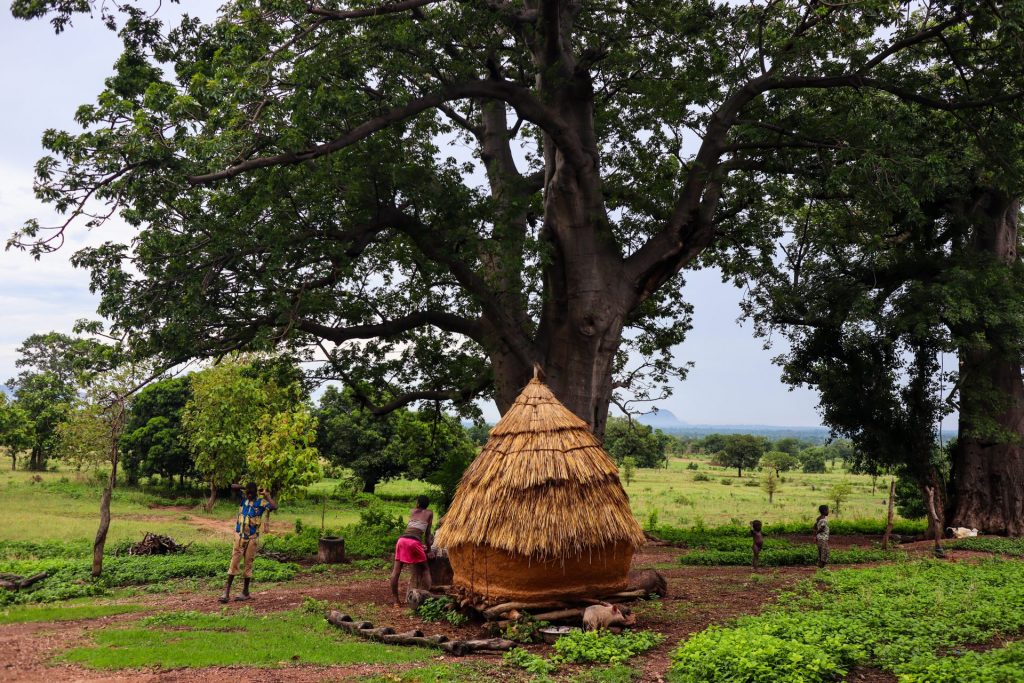


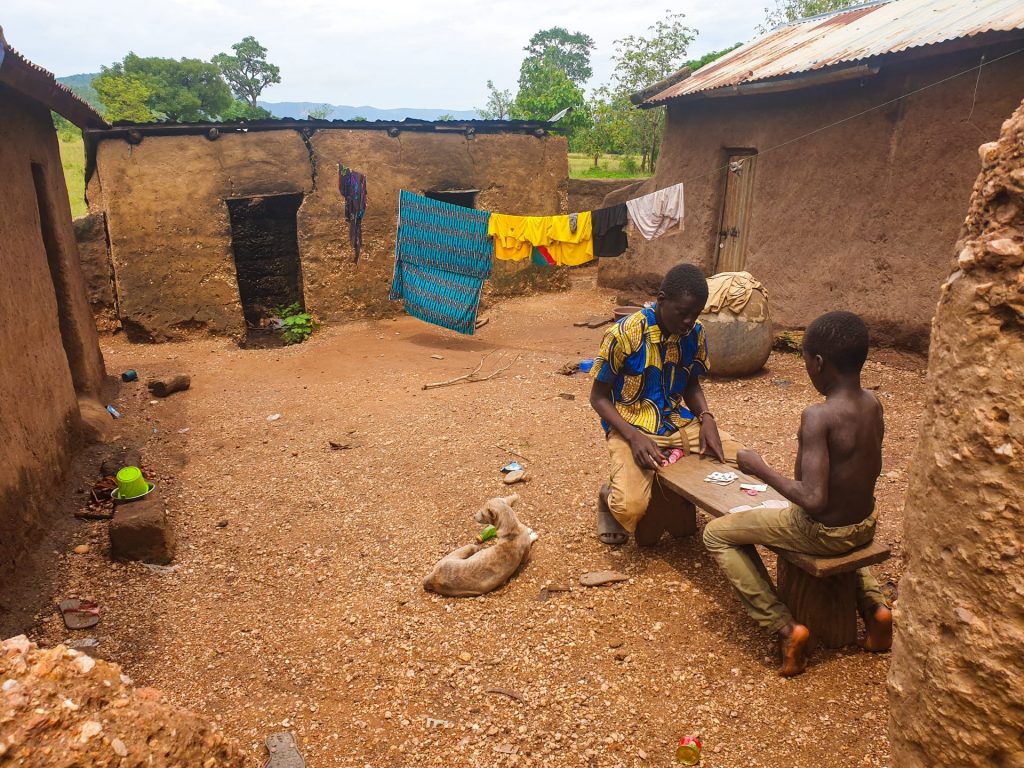

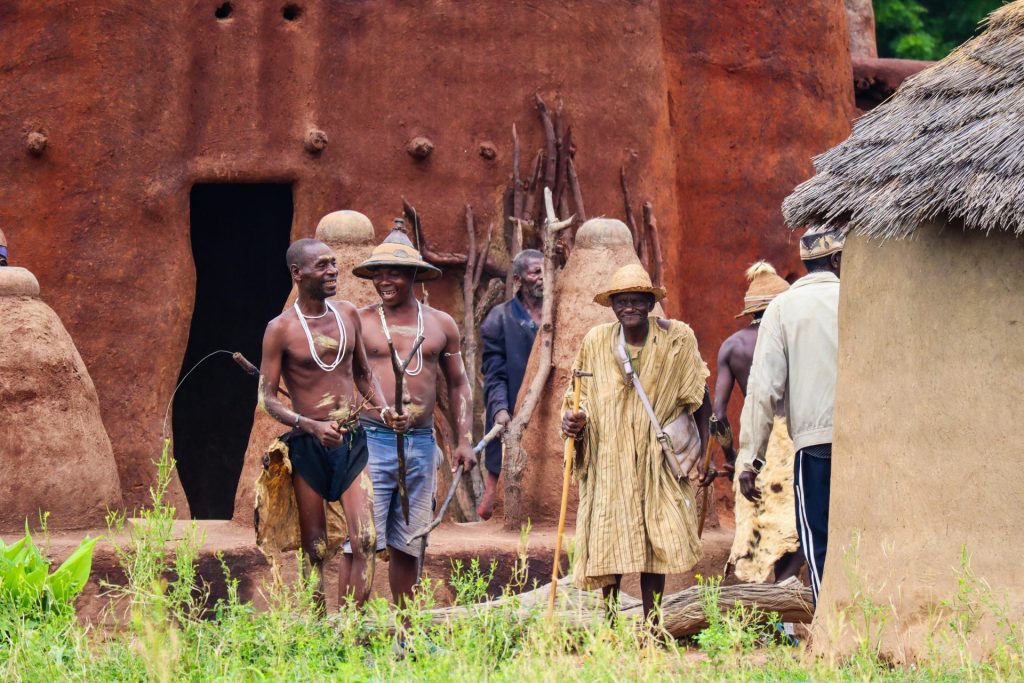


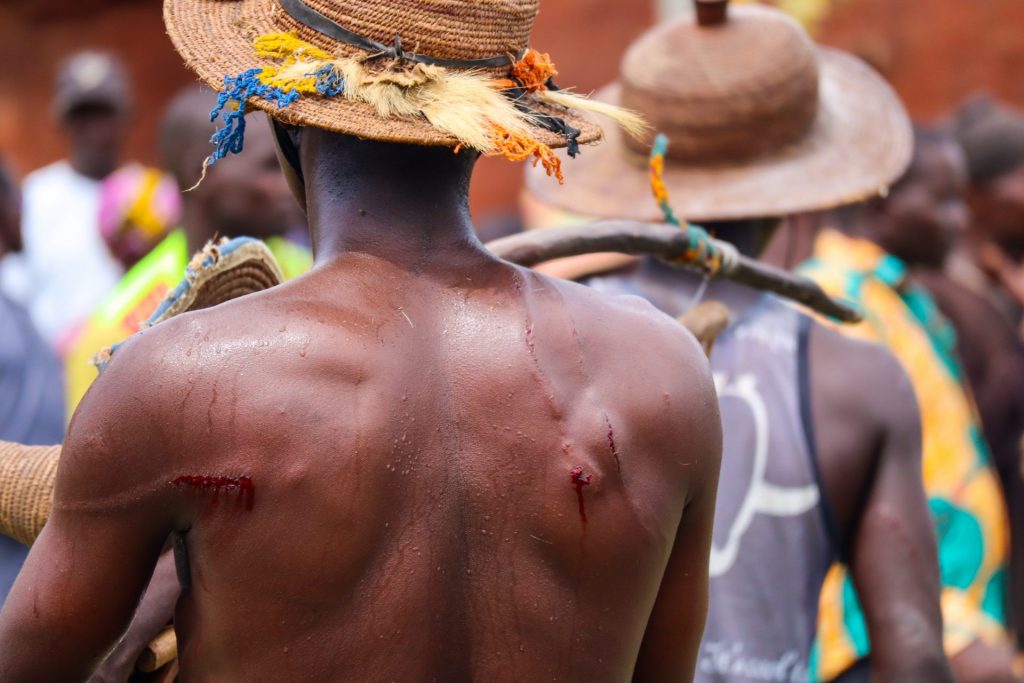
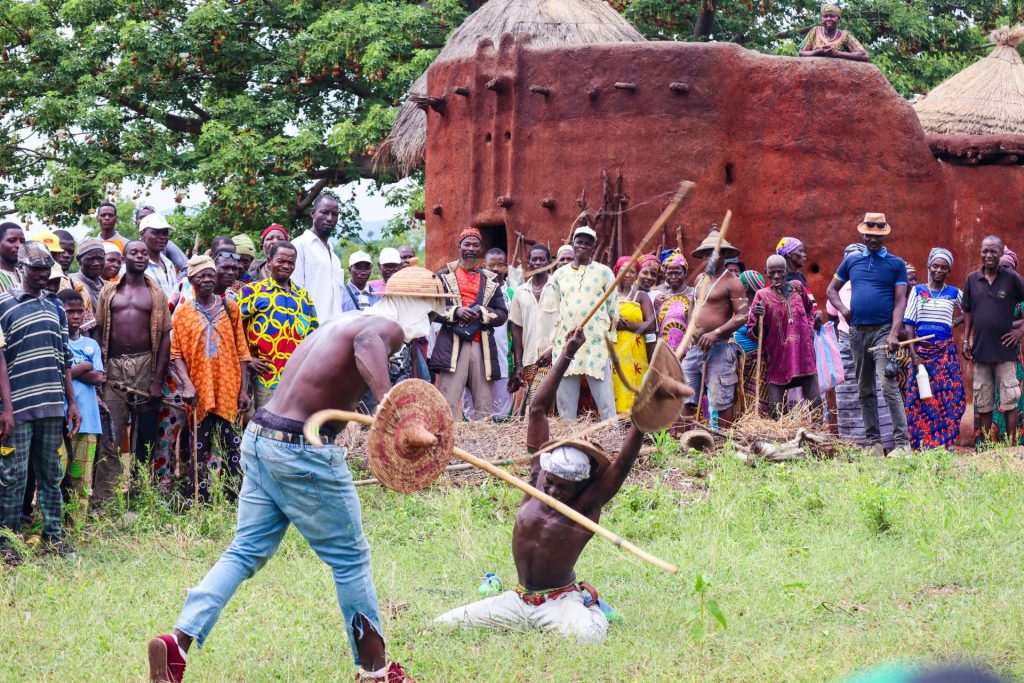
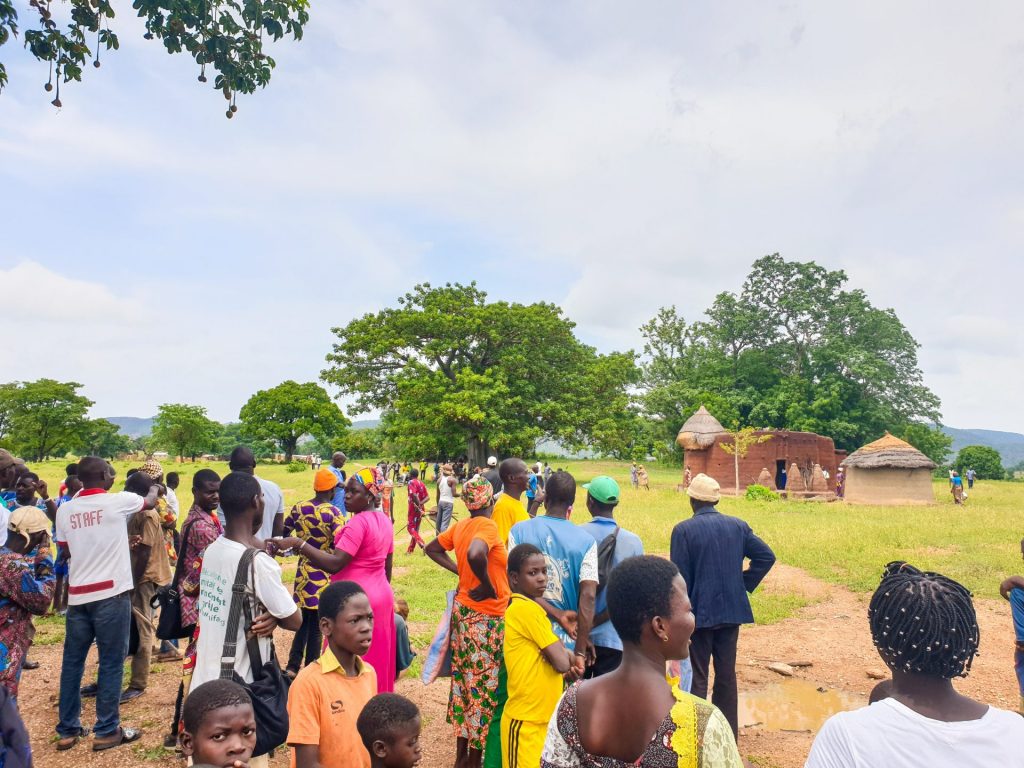
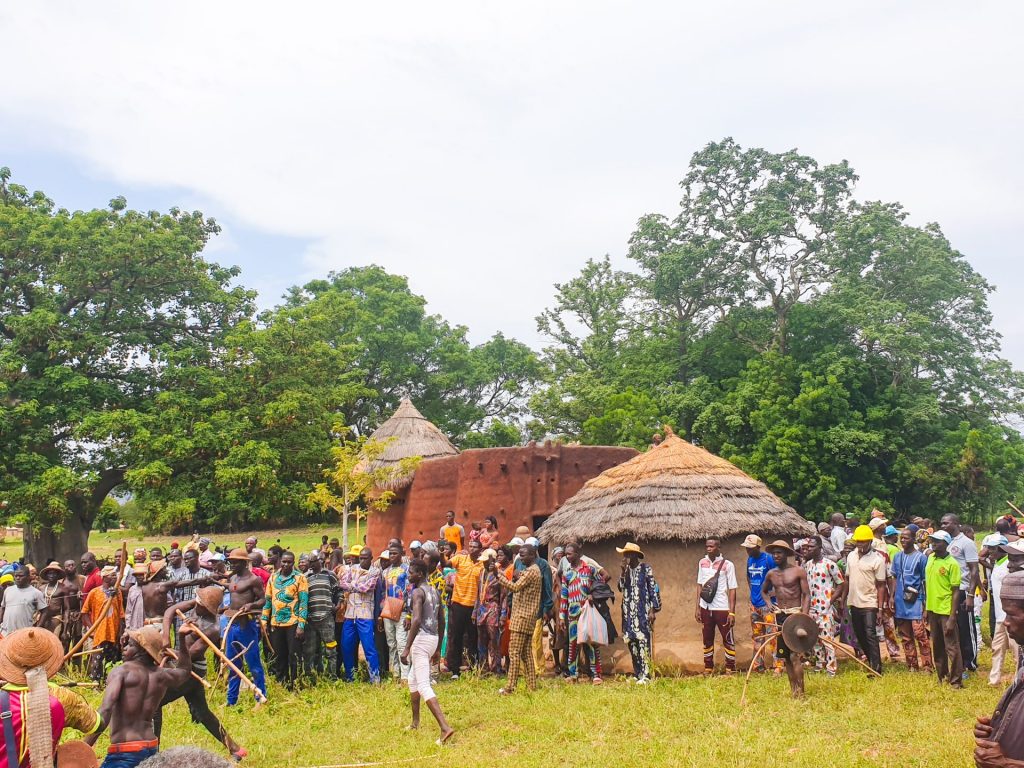

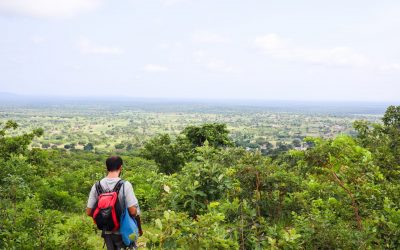

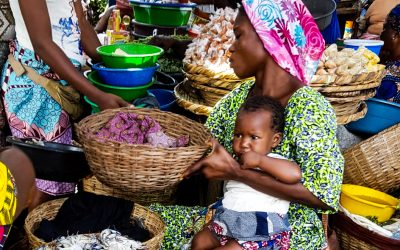
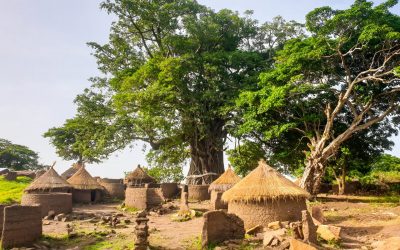

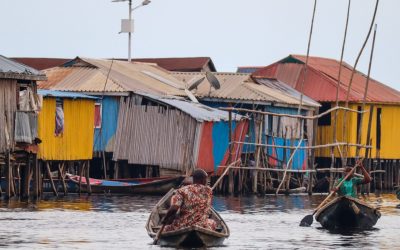
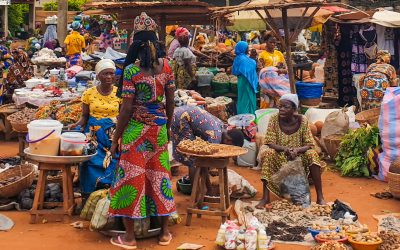
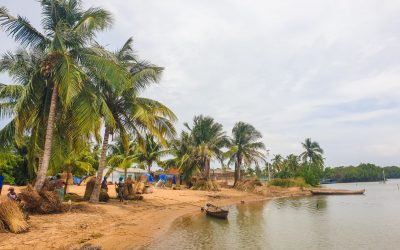
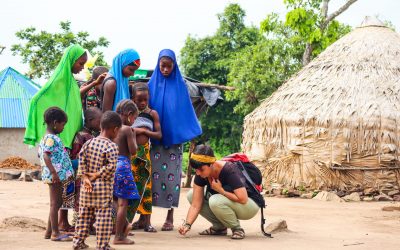
0 Comments